#Princess Maria Ana of Saxony
Explore tagged Tumblr posts
Note
There's a brief mention of the tension between Pedro V's sister Maria Ana (who would marry Prince George of Saxony) and his new bride on the Wikipedia article for Infanta Maria Ana of Portugal (1843–1884). Also while her parents didn't accompany her (the family lived in Düsseldorf and she had proxy wedding in Berlin than took a steamer from Ostend to Dover to stay with the British Royals and then to Portsmouth to Lisbon), but her brother Leopold did and how he met future bride Infanta Antonia.

Here's the pic that anon linked:

Thank you for the information!
4 notes
·
View notes
Photo

#Infanta Maria Ana of Portugal#Princess Maria Ana of Saxony#Portuguese royal family#1860s#saxon royal family#victorian
6 notes
·
View notes
Text
Queen Maria II of Portugal’s Sapphire Tiara to Be Auctioned
Queen Maria II of Portugal’s Sapphire Tiara will be sold at Christie’s Magnificent Jewels auction on May 12th in Geneva. The tiara is made up of nine detachable elements featuring 1415 diamonds and five sapphires. The estimate is 170,000-350,000 CHF/ 180,379-371,238 USD.

The tiara was inherited by her daughter, Infanta Maria Ana, Princess of Saxony, in 1853 and was passed down through the Saxon and Hohenzollen-Sigmaringen families. Princess Birgitta of Sweden, Princess of Hohenzollern, wore it for the last time to Queen Margrethe II of Denmark’s wedding in 1967.

Spanish Royal Jewels has a great post about the tiara with more information here. I’m hoping it somehow ends up in the new Royal Treasury Museum at Ajuda Palace in Lisbon which is set to open in June of this year.
#tiara auction#Queen Maria#Portugal#Portuguese Royal Family#tiara#sapphire#Princess Margarete#Princess Birgitta#Hohenzollern#Germany#German Royalty#Tiara Talk#Sweden#Queen Maria II#Swedish Royal Family#tiaras#diadem#diadems#royal tiaras#jewels#royal jewels#royal#royals#royalty#jewellery#jewelry#crown#crowns#crown jewels
130 notes
·
View notes
Text

Infanta Antónia of Portugal (Antónia María Fernanda Micaela Gabriela Rafaela Francisca de Assis Ana Gonzaga Silvéria Júlia Augusta de Saxe-Coburgo e Bragança) was a Portuguese infanta (princess) of the House of Bragança, daughter of Queen Maria II of Portugal and her King consort Fernando II of Portugal. Through her father, she also held the titles of Princess of Saxe-Coburg and Gotha and Duchess of Saxony. Mother of the king of Romania.
21 notes
·
View notes
Text
King Pedro V’s 6th sibling: Infanta Antónia of Portugal

Born: 17th February 1845 Belém Palace, Lisbon, PortugalDied: 27th December 1913 (aged 68) Sigmaringen, German Empire
Infanta Antónia of Portugal (Antónia María Fernanda Micaela Gabriela Rafaela Francisca de Assis Ana Gonzaga Silvéria Júlia Augusta de Saxe-Coburgo e Bragança) was a Portuguese infanta (princess) of the House of Bragança, daughter of Queen Maria II of Portugal and her King consort Fernando II of Portugal. Through her father, she also held the titles of Princess of Saxe-Coburg and Gotha and Duchess of Saxony.

Antónia was born in 1845 at the Palace of Belém, she was the sixth child of eleven, and the third girl. She married Leopold, Prince of Hohenzollern-Sigmaringen

on 12th September 1861. They had three sons;
William (1864–1927),

who succeeded as Prince of Hohenzollern; married (1) Princess Maria Teresa of Bourbon-Two Sicilies

(2) Princess Adelgunde of Bavaria

Ferdinand (1865–1927),

later King of Romania; married Princess Marie of Edinburgh

Karl Anton (1868–1919),

married Princess Josephine Caroline of Belgium

Antónia of Bragança died in the German Empire in 1913.
23 notes
·
View notes
Photo


Late last night we gathered all of the new books that we carry that contain lists of
radical/difficult/legendary/badass/bold/brave/bad
girls/women/ladies/leaders/rebels/princesses/goddesses/feminists/heroines
and created a word cloud of all the names that occur in these books. Here it is in long form:
A'isha bint abi Bakr Abbi Jacobson and Ilana Glazer Abigail Adams Ada Blackjack Ada Lovelace (appears 4 times) Adina De Zavala Aditi Aelfthryth Aethelflaed Agatha Christie Agnodice (appears 3 times) Agontime and the Dahomey Amazons Aine Aisholpan Nurgaiv Ala Alek Wek Alexandra Kollontai Alexis Smith Alfhild (appears 2 times) Alfonsina Strada Alia Muhammad Baker Alice Ball (appears 3 times) Alice Clement Alice Guy-Blache Alice Paul Alicia Alonso Alma Woodsey Thomas Althea Gibson Amal Clooney Amalia Eriksson Amanda Stenberg Amaterasu Amba/Sikhandi Ameenah Gurib-Fakim Amelia Earhart (appears 4 times) Amna Al Haddad Amy Poehler (appears 2 times) Amy Winehouse Ana Lezama de Urinza Ana Nzinga Anais Nin Andamana Andree Peel Angela Davis (appears 3 times) Angela Merkel (appears 2 times) Angela Morley Angela Zhang Angelina Jolie Anita Garibaldi (appears 3 times) Anita Roddick Ann Hamilton Ann Makosinski Anna Atkins Anna May Wong Anna Nicole Smith Anna of Saxony Anna Olga Albertina Brown Anna Politkovskaya Anna Wintour Anna-Marie McLemore Anne Bonny Anne Hutchinson Anne Lister Annette Kellerman (appears 3 times) Annie "Londonderry" Cohen Kopchovsky Annie Edson Taylor Annie Edson Taylor Annie Jump Cannon (appears 3 times) Annie Oakley (appears 2 times) Annie Smith Peck Aphra Behn Aphrodite Arawelo Aretha Franklin Artemis Artemisia Gentileschi (appears 4 times) Artemisis I of Caria Ashley Fiolek Astrid Lindgren Athena Aud the Deep-Minded Audre Lorde Audrey Hepburn Augusta Savage Aung San Suu Kyi (appears 2 times) Azucena Villaflor Babe Zaharias Barbara Bloom Barbara Hillary Barbara Walters Bast Bastardilla Beatrice Ayettey Beatrice Potter Webb Beatrice Vio Beatrix Potter Beatrix Potter Belle Boyd Belva Lockwood Benten Bessie Coleman (appears 2 times) Bessie Stringfield Bettie Page Betty Davis Betty Friedan Beyonce (appears 3 times) Billie Holiday Billie Jean King (appears 3 times) Birute Mary Galdikis Black Mambas Blakissa Chaibou Bonnie Parker Boudicca (appears 3 times) Brenda Chapman Brenda Milner Bridget Riley Brie Larson Brigid of Kildare Brigit Britney Spears Bronte Sisters Buffalo Calf Road Woman (appears 2 times) Buffy Sainte-Marie Calafia Caraboo Carly Rae Jepsen Carmen Amaya Carmen Miranda Carol Burnett Caroline of Brunswick-Wolfenbuttel Carrie Bradshaw Carrie Fisher (appears 2 times) Caterina Sforza Catherine Radziwill Catherine the Great (appears 3 times) Cecilia Payne-Gaposchkin Celia Cruz Chalchiuhtlicue Chang-o Charlotte E Ray Charlotte of Belgium Charlotte of Prussia Cher Cheryl Bridges Chien-Shiung Wu Chimamanda Ngozi Adichie (appears 3 times) Chiyome Mochizuki Cholita Climbers Chrissy Teigen Christina Christina of Sweden Christine de Pizan Christine Jorgensen (appears 2 times) Clara Rockmore Clara Schumann Clara Ward Claudia Ruggerini Clelia Duel Mosher Clemantine Wamariya Clementine Delait Cleopatra (appears 3 times) Coccinelle Coco Chanel (appears 2 times) Constance Markievicz Cora Coralina Coretta Scott King Corrie Ten Boom Courtney Love Coy Mathis Creiddylad Daenerys Targaryen Dahlia Adler Daisy Kadibill Dame Katerina Te Heikoko Mataira Delia Akeley Demeter Dhat al-Himma Dhonielle Clayton Diana Nyad Diana Ross Diana Vreeland (appears 2 times) Dixie Chicks Dolly Parton (appears 2 times) Dolores Huerta Dominique Dawes Dona Ana Lezama de Urinza and Dona Eustaquia de Sonza Dorothy Arzner Dorothy Dandridge Dorothy Thompson Dorothy Vaughan Dr. Eugenie Clark Dr. Jane Goodall (appears 3 times) Durga Edie Sedgwick Edith Garrud Edith Head Edith Wharton Edmonia Lewis Eleanor of Aquitaine Eleanor Roosevelt (appears 3 times) Elena Cornaro Piscopia Elena Piscopia Elinor Smith Elisabeth Bathory Elisabeth of Austria Elizabeth Bisland Elizabeth Blackwell Elizabeth Cady Stanton Elizabeth Hart Elizabeth I (appears 3 times) Elizabeth Murray Elizabeth Peyton Elizabeth Taylor Elizabeth Warren Elizabeth Zimmermann Elizsabeth Vigee-Lebrun Ella Baker Ella Fitzgerald Ella Hattan Elle Fanning Ellen Degeneres Elsa Schiaparelli Elvira de la Fuente Chaudoir Emily Warren Roebling Emma "Grandma" Gatewood Emma Goldman (appears 2 times) Emma Watson (appears 2 times) Emmeline Pankhurst (appears 3 times) Emmy Noether (appears 3 times) Empress Myeongseong Empress Theodora (appears 2 times) Empress Wu Zetian (appears 2 times) Empress Xi Ling Shi Enheduanna Eniac Programmers Eos Erin Bowman Estanatlehi Ethel Payne Eufrosina Cruz Eustaquia de Souza Eva Peron (appears 3 times) Fadumo Dayib Faith Bandler Fannie Farmer (appears 2 times) Fanny Blankers-Koen Fanny Bullock Workman Fanny Cochrane Smith Fanny Mendelssohn Fatima al-Fihri (appears 3 times) Fe Del Mundo Ferminia Sarras Fiona Banner Fiona Rae Florence Chadwick (appears 2 times) Florence Griffith-Joyner (appears 2 times) Florence Nightingale (appears 4 times) Frances E. W. Harper Frances Glessner Lee Frances Moore Lappe Franziska Freya Frida Kahlo (appears 7 times) Friederike Mandelbaum Funmilayo Ransome Kuti (appears 2 times) Gabriela Brimmer Gabriela Mistral Gae Aulenti Gaia George Sand Georgia "Tiny" Broadwick Georgia O'Keefe (appears 3 times) Gertrude Bell Gerty Cori Gilda Radner Girogina Reid Giusi Nicolini Gladys Bentley Gloria Steinem (appears 3 times) Gloria von Thurn Grace "Granuaile" O'Malley Grace Hopper Grace Jones Grace O'Malley (appears 3 times) Gracia Mendes Nasi Gracie Fields Grimke Sisters Guerrilla Girls Gurinder Chadha Gwen Ifill Gwendolyn Brooks (appears 2 times) Gypsy Rose Lee Hannah Arendt Harriet Beecher Stowe Harriet Tubman (appears 6 times) Hathor Hatshepsut (appears 7 times) Hazel Scott Hecate Hedy Lamarr (appears 5 times) Heidi Montag and Spencer Pratt Hel Helen Gibson Helen Gurley Brown (appears 2 times) Helen Keller (appears 2 times) Hildegard von Bingen Hillary Rodham Clinton (appears 2 times) Hina Hortense Mancini Hortensia Hsi Wang Mu Huma Abedin Hung Liu Hypatia (appears 4 times) Iara Ida B. Wells (appears 3 times) Ida Lewis Imogen Cunningham Irena Sendler (appears 3 times) Irena Sendlerowa Irene Joliot-Curie Isabel Allende Isabella of France Isabella Stewart Gardner Isadora Duncan (appears 2 times) Isis Iva Toguri D'Aquino Ixchel J.K. Rowling (appears 3 times) Jackie Mitchell Jacqueline and Eileen Nearne Jacquotte Delahaye Jane Austen (appears 2 times) Jane Dieulafoy Jane Mecom Jang-geum Janis Joplin Jayaben Desai Jean Batten Jean Macnamara Jeanne Baret (appears 3 times) Jeanne De Belleville Jennifer Aniston Jennifer Steinkamp Jenny Lewis Jesselyn Radack Jessica Spotswood Jessica Watson Jezebel Jill Tarter Jind Kaur Jingu Joan Bamford Fletcher Joan Beauchamp Procter Joan Jett (appears 2 times) Joan Mitchell Joan of Arc (appears 3 times) Jodie Foster Johanna July Johanna Nordblad Josefina "Joey" Guerrero Josephina van Gorkum Josephine Baker (appears 7 times) Jovita Idar (appears 2 times) Juana Azurduy Judit Polgar Judy Blume Julia Child (appears 2 times) Julia de Burgos Julie "La Maupin" d'Abigny (appears 3 times) Julie Dash Juliette Gordon Low Junko Tabei (appears 4 times) Justa Grata Honoria Ka'ahumanu Kali Kalpana Chawla Karen Carson Kasha Jacqueline Nabagesera Kat Von D Kate Bornstein Kate Sheppard Kate Warne Katherine Hepburn Katherine Johnson (appears 2 times) Kathrine Switzer Katia Krafft (appears 2 times) Katie Sandwina Kay Thompson Keiko Fukuda Keumalahayati Kharboucha Khawlah bint al-Azwar Khayzuran Khoudia Diop Khutulun (appears 5 times) Kim Kardashian King Christina of Sweden Kosem Sultan Kristen Stewart Kristin Wig Kuan Yin Kumander Liwayway Kurmanjan Dtaka Lady Godiva Lady Margaret Cavendish Laka Lakshmibai, Rani of Jhansi (appears 5 times) Lana Del Rey Las Mariposas Laskarina Bouboulina (appears 2 times) Laura Redden Searing Lauren Potter Laverne Cox (appears 2 times) Lee Miller Lella Lombardi Lena Dunham Leo Salonga Leymah Gbowee (appears 2 times) Libby Riddles Lieu Hanh Lil Kim Lili'uokalani Lilian Bland (appears 3 times) Lilith Lillian Boyer Lillian Leitzel Lillian Ngoyi Lillian Riggs Lindsay Lohan Liv Arensen and Ann Bancroft Lorde Lorena Ochoa Lorna Simpson Lorraine Hansberry Lotfia El Nadi Louisa Atkinson Louise Mack Lowri Morgan Lozen (appears 3 times) Lucille Ball Lucrezia Lucy Hicks Anderson Lucy Parsons Luisa Moreno Luo Dengping Lyda Conley Lynda Benglis Ma'at Mackenzi Lee Madam C.J. Walker (appears 3 times) Madame Saqui Madia Comaneci Madonna (appears 3 times) Madres de Plaza de Mayo Mae C. Jemison Mae Emmeline Wirth Mae Jemison (appears 3 times) Mae West Mahalia Jackson Mai Bhago Malala Yousafzai (appears 7 times) Malinche (appears 2 times) Mamie Phipps Clark Manal al-Sharif Marcelite Harris Margaret Margaret "Molly" Tobin Brown Margaret Bourke-White Margaret Cho Margaret Hamilton (appears 2 times) Margaret Hardenbroeck Philipse Margaret Sanger Margaret Thatcher (appears 2 times) Margery Kempe Margherita Hack Marguerite de la Rocque Maria Callas Maria Mitchell Maria Montessori (appears 2 times) Maria Reiche Maria Sibylla Merian Maria Tallchief Maria Vieira da Silva Mariah Carey Marian Anderson Marie Antoinette Marie Chauvet Marie Curie (appears 5 times) Marie Duval Marie Mancini Marie Marvingt Marie Tharp Marieke Nijkamp Marina Abramovic Mariya Oktyabrskaya (appears 2 times) Marjana Marlene Sanders Marta Marta Vieira da Silva Martha Gelhorn Martha Graham Mary Anning (appears 5 times) Mary Blair Mary Bowser (appears 3 times) Mary Edwards Walker (appears 2 times) Mary Eliza Mahoney Mary Fields (appears 2 times) Mary Heilmann Mary Jackson (appears 2 times) Mary Kate and Ashley Olsen Mary Kingsley Mary Kom Mary Lacy Mary Lillian Ellison Mary Pickford Mary Quant Mary Seacole (appears 3 times) Mary Shelley Mary Wollstonecraft (appears 2 times) Maryam Mirzakhani Mata Hari (appears 3 times) Matilda of Canossa Matilda of Tuscany Matilde Montoya Maud Stevens Wagner Maya Angelou (appears 4 times) Maya Gabeira Maya Lin (appears 2 times) Mazu Meg Medina Megan Shepherd Melba Liston Mercedes de Acosta Merritt Moore Meryl Streep Micaela Bastidas Michaela Deprince Michelle Fierro Michelle Obama (appears 3 times) Mildred Burke Miley Cyrus Millo Castro Zaldarriaga Mina Hubbard Minnie Spotted Wolf Mirabal Sisters (appear 2 times) Miriam Makeba (appears 3 times) Missy Elliot Misty Copeland Mochizuki Chiyome Moll Cutpurse Molly Kelly Molly Williams Moremi Ajasoro Murasaki Shikibu (appears 3 times) Nadia Murad Nadine Gordimer Nakano Takeko Nana Asma'u (appears 2 times) Nancy Rubins Nancy Wake (appears 2 times) Naomi Campbell Naziq al-Abid Neerja Bhanot Nefertiti Nell Gwyn Nellie Bly (appears 8 times) Nettie Stevens (appears 2 times) Nichelle Nichols Nicki Minaj Nicole Richie Nina Simone (appears 2 times) Njinga of Angola Njinga of Ndongo Noor Inayat Khan (appears 3 times) Nora Ephron (appears 3 times) Norma Shearer North West Nuwa Nwanyeruwa (appears 2 times) Nyai Loro Kidul Nzinga Nzinga Mbande Octavia E Butler Odetta Olga of Kiev (appears 2 times) Olivia Benson Olympe de Gouges Oprah Winfrey (appears 5 times) Osh-Tisch Oshun Oya Pancho Barnes Paris Hilton Parvati Patti Smith (appears 2 times) Pauline Bonaparte Pauline Leon Peggy Guggenheim (appears 2 times) Pele Petra "Pedro" Herrera Phillis Wheatley Phoolan Devi Phyllis Diller Phyllis Wheatley Pia Fries Pingyang Policarpa "La Pola" Salavarrieta Policarpa Salavarrieta (appears 2 times) Poly Styrene Poorna Malavath Pope Joan Portia De Rossi and Ellen Degeneres Princess Caraboo Princess Diana Princess Sophia Duleep Singh Psyche Pura Belpre Qiu Jin (appears 3 times) Queen Arawelo Queen Bessie Coleman Queen Lili'uokalani (appears 2 times) Queen Nanny of the Maroons (appears 4 times) Quintreman Sisters Rachel Carson (appears 4 times) Rachel Maddow Raden Ajeng Kartini Ran Rani Chennamma Rani Lakshmibai Rani of Jhansi Raven Wilkinson Rebecca Lee Crumpler Rhiannon Rigoberta Menchu Tum Rihanna Rita Levi Montalcini (appears 2 times) Robina Muqimyar Roni Horn Rosa Luxemburg Rosa Parks (appears 4 times) Rosalind Franklin Rosaly Lopes Rose Fortune Rowan Blanchard Roxolana Ruby Nell Bridges (appears 3 times) Rukmini Devi Arundale Rupaul Ruth Bader Ginsburg (appears 3 times) Ruth Harkness Ruth Westheimer Rywka Lipszyc Sadako Sasaki Sally Ride Samantha Christoforetti Sappho (appears 3 times) Sara Farizan Sara Seager Sarah Breedlove Sarah Charlesworth Sarah Winnemucca Saraswati Sarinya Srisakul Sarojini Naidu Sarvenaz Tash Sayyida al-Hurra (appears 2 times) Sekhmet Selda Bagcan Selena Seondeok of Silla (appears 2 times) Serafina Battaglia Serena Williams (appears 4 times) Shajar al-Durr Shamsia Hassani Sharon Ellis Sheryl Crow Sheryl Sandberg Shirely Chisolm (appears 2 times) Shirley Muldowney Shonda Rhimes (appears 2 times) Simone Biles (appears 2 times) Simone de Beauvoir Simone Veil Sister Corita Kent Sita Sky Brown Sofia Ionescu Sofia Perovskaya Sofka Dolgorouky Sojourner Truth (appears 5 times) Solange Sonia Sotomayor (appears 2 times) Sonita Alizadeh (appears 2 times) Sophia Dorothea Sophia Loren Sophie Blanchard Sophie Scholl (appears 3 times) Sor Juana Ines de la Cruz (appears 2 times) Sorghaghtani Beki Spider Woman Stacey Lee Stagecoach Mary Fields (appears 2 times) Steffi Graf Stephanie Kwolek Stephanie von Hohenlohe Stevie Nicks Subh Susa La Flesche Picotte Susan B. Anthony Susan La Flesche Picotte Sybil Ludington (appears 3 times) Sybilla Masters Sylvia Earle (appears 3 times) Tallulah Bankhead Tamara de Lempicka Tara Tarabai Shinde Tatterhood Taylor Swift Te Puea Herangi (appears 2 times) Temple Grandin (appears 3 times) Teresita Fernandez Mirabal Sisters Muses Night Witches Shaggs Stateless Thea Foss Therese Clerc Tin Hinan Tina Fey (appears 2 times) TLC Tomoe Gozen (appears 2 times) Tomyris (appears 2 times) Tonya Harding Tove Jansson (appears 2 times) Troop 6000 Trung Sisters Trung Trac and Trung Nhi (appear 2 times together) Tyche Tyler Moore Tyra Banks Ulayya bint al-Mahdi Umm Kulthum Ursula K. LeGuin Ursula Nordstrom Valentina Tereshkova (appears 5 times) Valerie Thomas Vanessa Beecroft Venus Williams (appears 2 times) Victoria Beckham Vija Celmins Viola Davis Viola Desmond Violeta Parra Virginia Apgar Virginia Hall Virginia Woolf (appears 3 times) Vita Sackville-West Vivian Maier Wallada bint al-Mustakfi (appears 2 times) Wang Zhenyi (appears 2 times) Wangari Maathai (appears 3 times) Washington State Suffragists Whina Cooper Willow Smith Wilma Mankiller Wilma Rudolph (appears 3 times) Winona Ryder Wislawa Szymborska Wu Mei Wu Zetian (appears 3 times) Xian Zhang Xochiquetzal Xtabay Yaa Asantewaa (appears 3 times) Yael Yani Tseng Yayoi Kusama Yemoja Yennenga Yeonmi Park Ynes Mexia Yoko Ono Yoshiko Kawashima Yuri Kochiyama Yusra Mardini Zabel Yesayan Zaha Hadid (appears 2 times) Zenobia Zoe Kravitz Zora Neale Hurston (appears 2 times)
#publishing#lists#women#ladies#girls#princesses#goddesses#daredevils#adventurers#broads#feminists#heroines#trailblazers
13 notes
·
View notes
Photo

Maria Anna of Portugal, Princess George of Saxony (21 August 1843 - 5 February 1884)
#maria ana fernanda leopoldina micaela rafaela gabriela carlota antónia júlia vitória praxedes francisca de assis#maria anna of portugal#princess of saxony#wife of george of saxony#19th century#women in history
0 notes
Photo

A portrait of Princess María Isabel Ana of Naples and Sicily, the third daughter and third child of Charles III of Spain and Maria Amalia of Saxony. Sadly, the little princess died the year after this portrait was painted, just shy of her 6th birthday.
#María Isabel Ana of Naples and Sicily#18th century#house of bourbon#18th century art#charles iii#maria amalia of saxony#long live the queue
107 notes
·
View notes
Photo

Infanta Maria Ana of Portugal she married Prince George of Saxony and among her children were: Maria Josepha, who married Archduke Otto of Austria and was the mother of the last Austrian emperor, Karl I. Also Frederick Augustus, the husband of Princess Louise of Tuscany, their messy divorce was one of the big royal scandals of their time.
12 notes
·
View notes
Text
King Pedro V’s 5th sibling: Infanta Maria Ana de Portugal

Born: 21st August 1843 Necessidades Palace, Lisbon, Portugal Died: 5th February 1884 (aged 40) Dresden, Saxony
Infanta Maria Ana of Portugal (Maria Ana Fernanda Leopoldina Micaela Rafaela Gabriela Carlota Antónia Júlia Vitória Praxedes Francisca de Assis Gonzaga) (21st August 1843 – 5th February 1884) was a Portuguese infanta (princess), the eldest surviving daughter of Queen Maria II of Portugal and her King consort Fernando II of Portugal, a member of the House of Bragança.
After her mother's death in 1853, when Maria Ana was just ten years old, she became the leading lady of the court, until her older brother, King Pedro V of Portugal, married Princess Stephanie of Hohenzollern-Sigmaringen,

in 1858. Although in the early stages of their acquaintance the two sisters-in-law had a good relationship, in a letter written in 1859 to Prince Albert of Saxe-Coburg and Gotha,

when Stephanie was already dead, King Pedro mentions that his sister made unflattering comments regarding his wife "because of her feminine vanity caused by a lower status (...)"
The relationship between the sisters-in-law seems to have had its ups and downs since Stephanie's arrival in May 1858 and Maria Ana's wedding in May 1859. The Queen wrote about her sister-in-law: "She is, in every respect, the one who is more like Pedro (...)", "She is a charming person, good, generous, remarkably sensible for her age, with no trace of selfishness, respected and loved by all of us (...) George of Saxony has discovered a true gem. She is happy and loves him, but she cannot talk about the moment in which she will leave her family without crying. What is certain is that she will leave a terrible emptiness behind". Maria Ana's brother, Pedro, also claims during this time that his sister is "the pearl of our family circle", in a letter to Prince Albert.
She married in Lisbon at the Belém Palace on 11th May 1859 Prince George of Saxony (1832–1904),

second son of King John I of Saxony,

a kinsman from the Catholic Albertine branch of her father's Wettin dynasty. Queen Stephanie tried to organize a brilliant ceremony, but, in the end, the wedding was quiet and went unnoticed in both Portugal and Saxony. The newly-weds spent their first days as a married couple at Belém Palace. During their short stay in Portugal after the ceremony, Prince George left a poor impression with the Portuguese Royal Family, as he "barely talked to the bride" and did not attend a theater performance to which he had been invited. During that same performance, 15-year-old Maria Ana was seen crying. The couple left to Saxony on May 14th. Maria Ana was not allowed to take Portuguese ladies-in-waiting with her and was only accompanied by her brother Luís
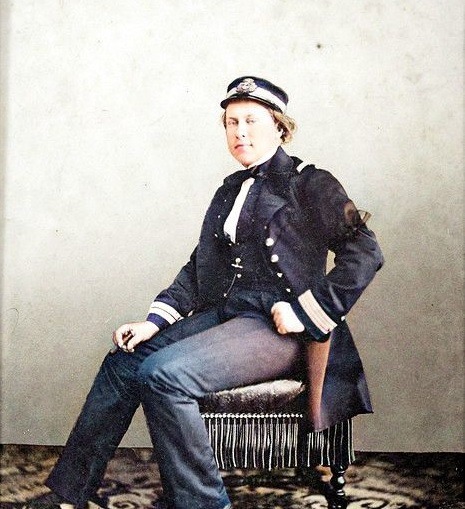
in the journey. Pedro V wrote the following regarding the wedding: "the wedding of my sister to Prince George of Saxony was celebrated with more pomp than happiness. The former is followed by a regretful fate, as he left no sympathies and people who met him often left with a poor impression."
The marriage was not a happy one, according to Historian Eduardo Nobre who claims that the Prince "did not live up to the expectations and qualities of the Portuguese Infanta". Despite their issues, they had eight children.
Although she renounced her claims to the Portuguese throne when she married, Maria Ana could still become Queen if the male line became extinct. This situation nearly happened in 1861, when King Pedro V and two of her other brothers died from Typhoid Fever and left no children. However, this hypothesis was completely put aside when her brother, King Luís I, married Princess Maria Pia of Savoy
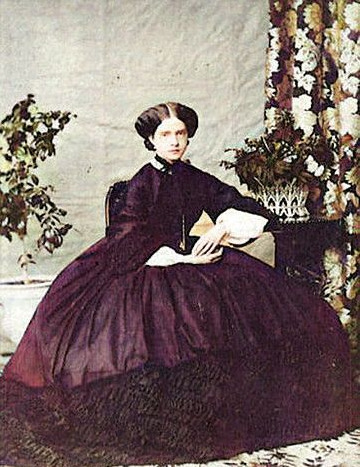
and had two sons, the future King Carlos I
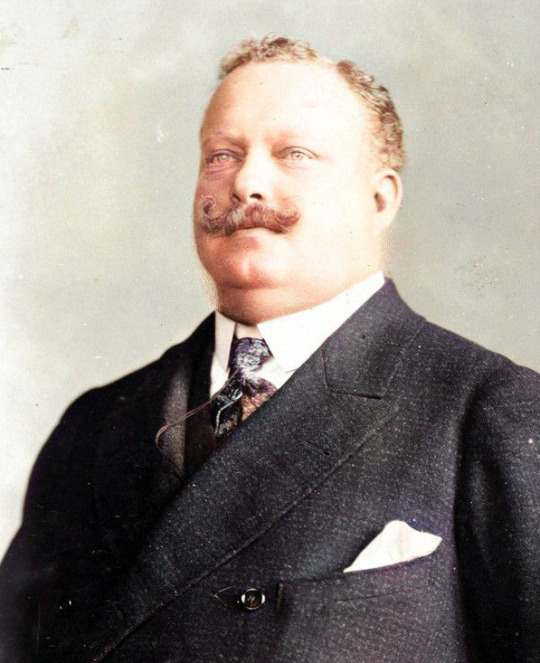
and Infante Afonso.
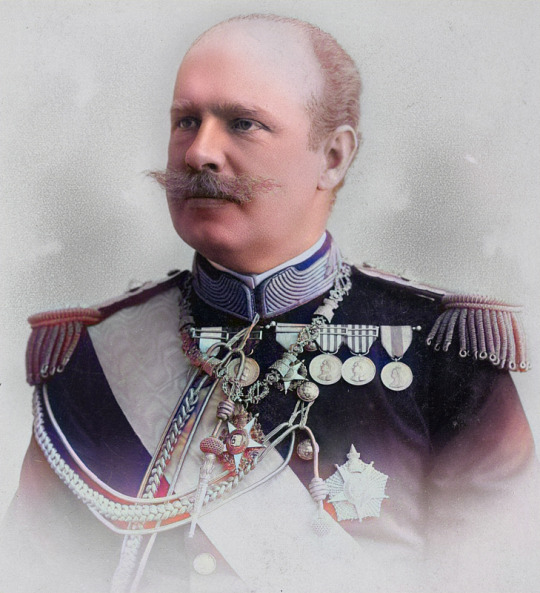
Despite everything, it's not likely that Maria Ana ever gave this hypothesis great importance because of her troubled marriage and many children.
Around 1883, her youngest son, Prince Albert of Saxony,

became seriously ill. Maria Ana took care of him for several months until he recovered. This effort would be fatal, as the Infanta died from exhaustion, on 5th February 1884, before her husband became King. Her husband would remain unmarried for the rest of his life.
In Portugal, her second brother Luís I soon succeeded her eldest brother Peter V as king.
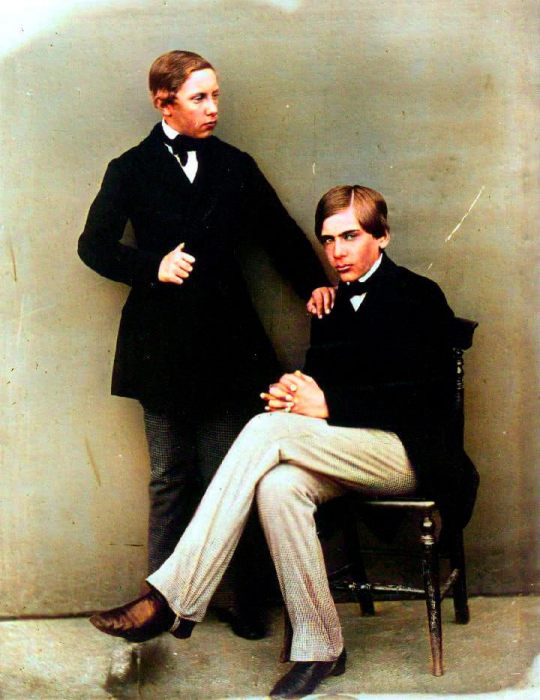
Her husband's elder brother Albert
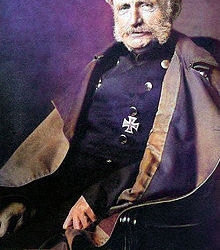
succeeded her father-in-law as King of Saxony and gradually it became clear that he and his wife Carola of Vasa
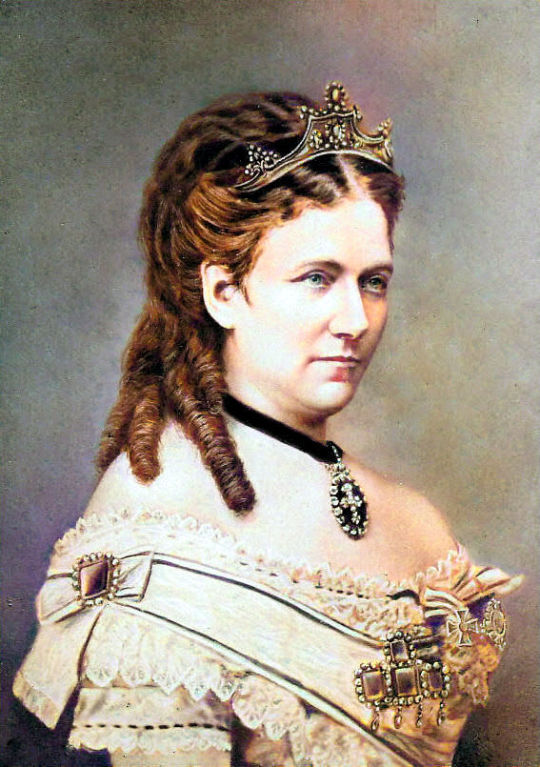
were not able to have children of their own. Maria Ana's eldest son would almost certain to one day succeed to the throne.
Marie Johanna Amalie Ferdinande Antonie Luise Juliane, (19th June 1860 - 2nd March 1861), died in childhood, no issue
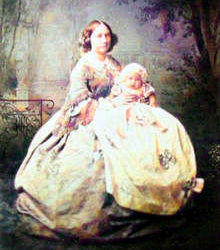
Elisabeth Albertine Karoline Sidonie Ferdinande Leopoldine Antonie Auguste Clementine (14th February 1862 - 18th May 1863) died in childhood, no issue
Mathilde Marie Auguste Viktorie Leopoldine Karoline Luise Franziska Josepha (19th March 1863 - 27th March 1933) died unmarried, no issue
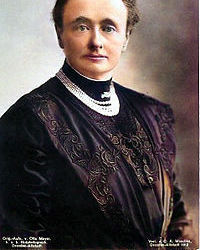
Frederick Augustus Johann Ludwig Karl Gustav Gregor Philipp (25th May 1865 - 18th February 1932)
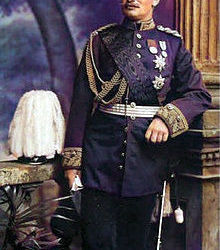
married Princess Louise of Tuscany (1870–1947),
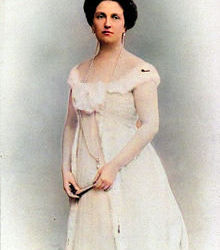
later divorced, had issue
Maria Josepha Luise Philippine Elisabeth Pia Angelica Margarethe (31st May 1867 - 28th May 1944)

married to her cousin second degrees Archduke Otto Franz of Austria (1865–1906),
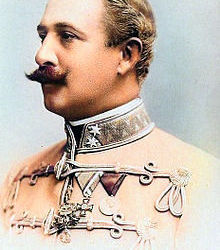
had issue
Johann Georg Pius Karl Leopold Maria Januarius Anacletus (10th July 1869 - 24th November 1938) married first Duchess Maria Isabella of Württemberg (1871–1904) and second Princess Maria Immaculata of Bourbon-Two Sicilies (1874–1906)

Maximilian Wilhelm August Albert Karl Gregor Odo (17th November 1870 - 12th January 1951) ordained as a priest, died unmarried, no issue
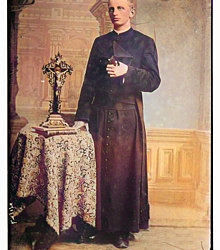
Albert Karl Anton Ludwig Wilhelm Viktor (25th February 1875 - 16 September 1900) died unmarried, no issue.

Princess Maria Ana predeceased her father Fernando, her husband George, and her brother-in-law King Albert of Saxony. In 1902 George succeeded his childless brother as king, and on his death in 1904 Maria Ana's eldest son became King of Saxony as Frederick Augustus III.
#infanta maria ana de bragança#house of bragança#queen maria ii of portugal#king consort fernando ii#king pedro v of portugal
13 notes
·
View notes
Text
King Pedro V of Portugal

Approaching the life and history of King Pedro V in its essence, is justified given the importance that this monarch had in such a short time of life and reign, for Portugal, as well as the important role he played in development, whether technological, or social at that time in the country in various sectors. Pedro de Alcântara Maria Fernando Miguel Rafael Gonzaga Xavier João António Leopoldo Victor Francisco de Assis Júlio Amélio de Bragança, Bourbon and Saxe Coburgo Gotha was born in Lisbon at Paço Real das Necessidades

on September 16th, 1837 at 11.30 pm, where he also died on November 11th 1861, at 7 pm being baptized in the chapel of the same Paço on October 1st the following by the Cardinal Patriarch of Lisbon D. Fr. Patrício da Silva (1756 - 1840),

chaplain of Queen D. Maria II. Known as, The Hopeful, The Well-Beloved or The Very Beloved, firstborn son of Queen D. Maria II (1819 - 1853) of sovereign Portugal, and of her husband, the king consort D. Fernando II (1816 - 1885).
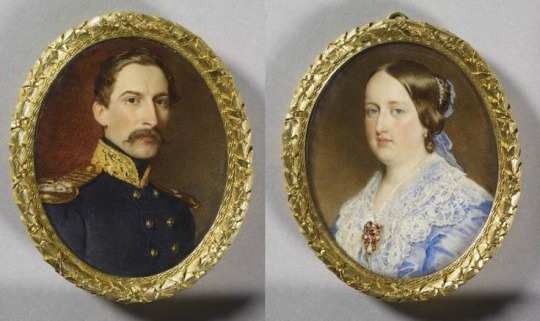
On the day of the birth of Infante D. Pedro, there were parties all over Lisbon and in the gardens on the outskirts around the city. All of this because there was fear of the danger of no succession on the part of Queen D. Maria II due to her difficult pregnancy. Pedro was sworn and recognized as a royal prince and heir to the Portuguese crown by the Cortes Gerais on January 26th, 1838, aged just over four months. Considered a gifted child, he was educated exquisitely, as were his brothers, D. Luiz I of Portugal (1838 - 1889), D. João de Bragança, Duke of Beja (1842 - 1861), D. Maria Ana de Bragança, princess of Saxony (1843 - 1884), D. Antónia de Bragança (1845 -1913), D. Fernando Maria Luiz de Bragança (1846 - 1861) and D. Augusto de Bragança, Duke of Coimbra (1847-1889), by the best teachers from Lisbon, and mainly by his mother, who always had a very good reputation as an excellent educator. From an early age he revealed the brilliant qualities that characterized him, his remarkable intelligence, his tendency to persevere in study, the noblest and highest qualities of spirit and heart. He had a remarkable moral and intellectual preparation.

He studied natural sciences, philosophy, had a good command of Greek and Latin and even studied English.

Before completing two years of age, he already mastered the German and French languages, at the age of twelve he spoke Latin and Greek, studied great works of philosophy and wrote articles for newspapers. His spirit was influenced by the coexistence he had with Alexandre Herculano (1810 - 1877),

who was his educator. He also received numerous advice on governance and sense of state by Mário Jorge de Castro Botelho, with whom he exchanged correspondence, among other figures of the time, during the period of his reign.
The young monarch's apprenticeship was also made with the various trips he will undertake in Portugal and abroad, visiting several European courts, observing schools and teaching methods, asylums, hospitals, factories and museums. When his mother, Queen D. Maria II, died on November 15th, 1853, Pedro was sixteen years old, whom he succeeded on the throne. D. Pedro V
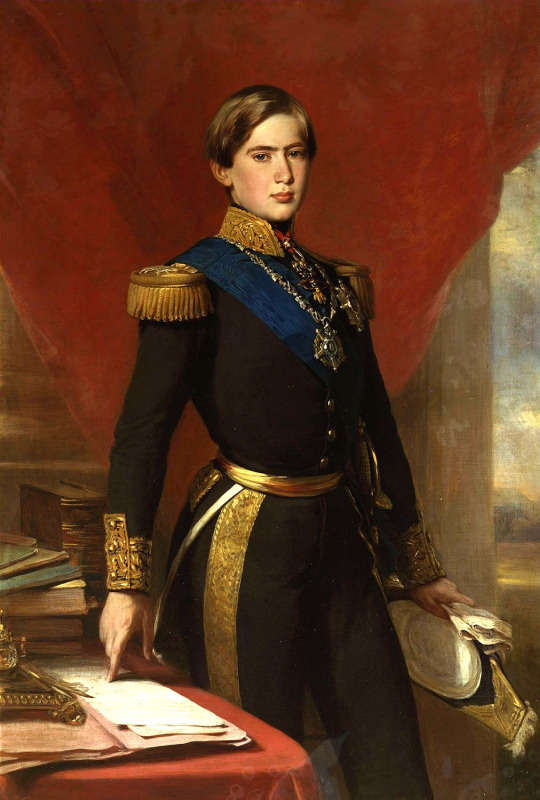
is the 30th king of Portugal
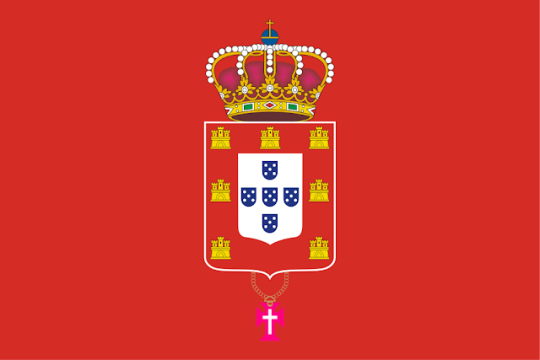
and although very young at the time of his accession to the Portuguese throne, he was considered by many to be an exemplary monarch, who reconciled the people with the royal house, after his mother's reign was fruit of a civil war. When D. Pedro V began his reign, he still governed the ministry of Saldanha, out of the Regeneration of 1851. The Duke of Saldanha

that D. Pedro deplored and despised, considered a condottieri, already somewhat outdated for the capitalist country (capitalist at the time). it costs, it should be mentioned, of foreign capital, mainly French and English) is no longer in conspiracies, either stability. António Maria de Fontes Pereira de Melo (1819 - 1887)

stands out in this ministry, holder of the Public Works portfolio, famous for the impulse he gave to the railways in Portugal, among other works in Portugal. D. Fernando II, his father, played a fundamental role in the beginning of his reign, having exercised the government of the nation as regent of the kingdom, guiding the young king with regard to the great public works carried out. D. Pedro V is often described as a monarch with very present social values, partly due to his education, which included work with the communities and a vast knowledge of the European continent. To solemnly celebrate the beginning of the reign of D. Pedro V in 1853, the Asylum of D. Pedro V

was founded, in Campo Grande in Lisbon, being this monarch from the outset his protector. Its magnificent building still exists,
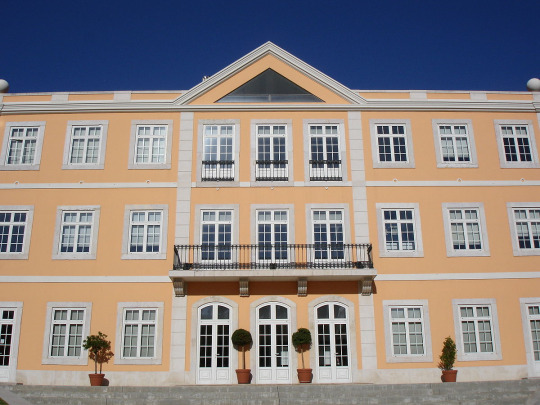
and would be inaugurated on October 18th, 1857, with its Statutes approved on November 2nd, 1860. In the beginning it only received children up to the age of seven, with the death of this monarch, the statutes were refurbished in 1867, becoming the Asylum of Disadvantaged Childhood of Campo Grande, and asylum seekers can remain until 18 years old. The Lisbon trade contributed to the maintenance of this Asylum. At the age of eighteen, the majority of the kings of Portugal, D. Pedro V was even smaller, and that same day the Council of State was called, which decided to entrust the regency of the kingdom, during the young monarch's minority, to his father. , the king consort D. Fernando II, since there is no provision regarding this issue in the Constitutional Charter, a decision which was later confirmed by the Cortes Gerais, and which he took an oath at the session of December 19th, 1853. It was during his reign Regeneration began and Portugal entered modernity, so to speak. D. Pedro V and his brother D. Luiz I of Portugal, who later succeeded him to the throne, undertook an educational and recreational trip through Europe. In May 28h 1854 they left the Lisbon bar on board the steam ship Mindelo,
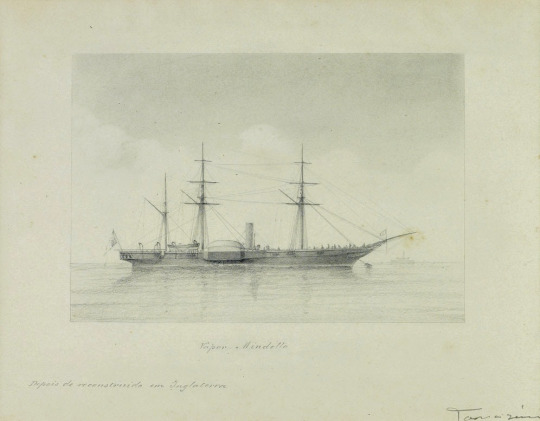
going directly to London, then passing to Belgium, Holland, Prussia, Austria, France and Saxe-Coburg-Gotha, returning to London, where they returned to Lisbon. In all these courts, the royal rulers provided the greatest proof of consideration and sympathy. As a proof of this, during that trip to London, on June 10th, 1854, D. Pedro V and his brother D. Luiz I, accompanied, on the right in the place of honor, Queen Victoria of the United Kingdom in the sumptuous reopening of the Palace of Cristal, reinstalled on Sydenham Hill.


Therefore, the Portuguese king and prince were received in the privacy of the British Royal Family
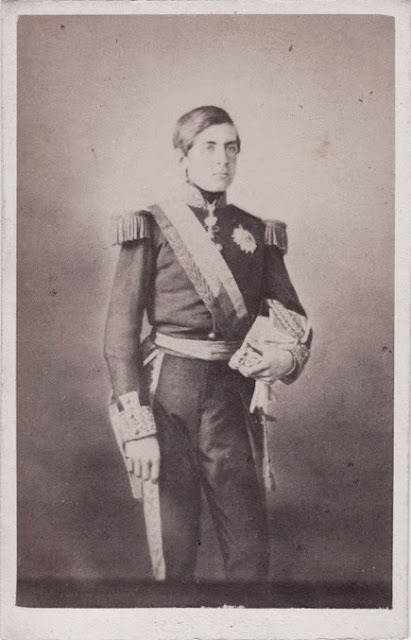
and this friendship would last, even beyond their stay in the Lands of Her Majesty,

as they would continue to correspond with assiduity becoming Queen Victoria and the prince Albert,

advisers and even confidants of the young Portuguese monarch.
In the following year, 1855, they undertook a new journey, visiting again some of the lands already mentioned, as well as Italy, Switzerland, etc. All visiting places served them as learning from other realities, especially the most innovative and those that were urgent to implement in Portugal.
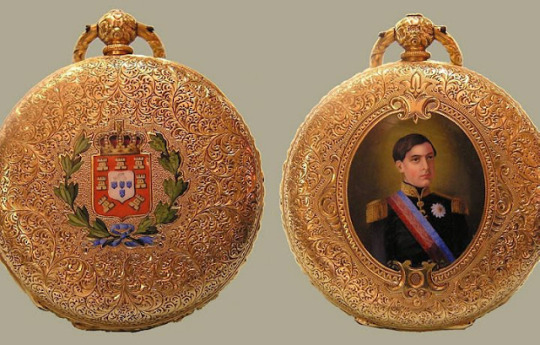
On the return of that trip, completing D. Pedro V, eighteen years old on September 16th, 1855, that day his majority was declared, and he swore an oath in a solemn session of the General Courts before the Peers of the Kingdom and the Deputies of the Nation: Pela Graça of God, King of Portugal and the Algarves, d'Aquém and d'Além-Mar in Africa, Lord of Guinea and Conquest, Navigation and Commerce of Ethiopia, Arabia, Persia and India, etc. On that day he receives from his father D. Fernando II, king regent, the duties of the throne of Portugal that had belonged to his mother the queen D. Maria II. Large and enthusiastic parties were held in Lisbon to solemnize the new king who was going to assume the heavy and thorny office of the kingdom's governance. This new king was a young man of 18 years, serious and sensible, illustrated and serious as a man twice his chronological age. Always concerned with education and training, on December 9th, 1855, the Royal School of Mafra opens in the Mafra Palace itself, this institution being financed by the monarch himself.


That same year, D. Pedro V chaired the inauguration of the first electric telegraph in Portugal

and, on the following year, on October 28th, 1856, he inaugurated the first section of railroad in Portugal between Lisbon and Carregado, following a process initiated by his mother, Queen D. Maria II in 1853. Regarding the railway D. Pedro V followed with interest and enthusiasm the works and line tests that took place days before of the inauguration.

Having created the first railway company in Portugal, the Companhia Peninsular dos Caminhos de Ferro de Portugal, in charge of building the line from East Lisbon to Spain. On that day after the blessing of the locomotives, sixteen carriages left in a festive atmosphere for Carregado, towed by two locomotives named "Santarém" and "Coimbra". The young king D. Pedro V and the guests of the company's management followed in the main coach, surrounded by his technicians, all talking about this novelty and innovation for Portugal.

Although this inaugural trip was troubled, it would be the beginning of a great and important development for the country. As a curiosity, D. Pedro V and his brothers, namely D. Luiz I, had early coexistence with the new technologies of the time, which it would come to some extent to influence later on the railway. An example of this was the miniature toy locomotive, real steam, which the King of France Louis Philippe I (1773 - 1850), asked mechanical engineer Eugène Philippe, to build the copy of a toy steam locomotive (called steam live or live steam) ), his belonging, called La Lilliputienne, to offer the Portuguese royal family.
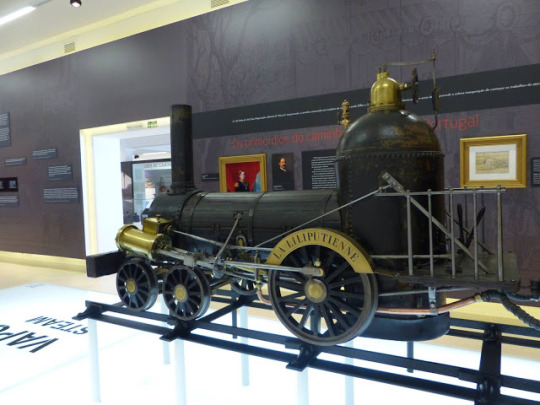
This was also how cultural training began through the contacts that the two monarchs had as children and young people, with that toy from the Palácio das Necessidades. It was the first steam locomotive to exist in Portugal. Around 1880, this toy was made available for the Passeio Público de Lisboa. The locomotive, its tendency and the network of rails became an installation of "steam live" (live steam) at the service of the children of the Lisbon bourgeoisie and source of animation in that public place. This locomotive is currently preserved at the National Railway Museum (MNF) in Entroncamento. It is also during his reign that the first regular ship voyages between Portugal and Angola begin. Popular education has always been his main concern. He founded the Escola Real das Necessidades on September 16th, 1856, in a building near Paço Real,

and in Paço de Mafra he had installed a school in the previous year. This king had the pleasure of distributing books in prizes to children, his secretary Joaquim Pinheiro Chagas (1809 - 1859), father of the late statesman and distinguished writer Manuel Joaquim Pinheiro Chagas (1842 - 1895), was responsible for translating and adapting Portuguese schools to Dr. Brewer's Clef de la Science. This translation was interrupted with the death of the translator, which happened on December 3rd, 1859. Great misfortunes began to mark his reign. In 1856 a morbus cholera epidemic

developed in Lisbon, and in many other parts of the country, making considerable numbers of victims, in the following year, 1857, another scourge, which became even more devastating, yellow fever, came to plague the capital. It was two years of sad memory, which mourned thousands of families in Portugal, many of them being completely extinguished, leaving many children in orphanage. The city of Lisbon, especially in 1857, had a very sad aspect, especially in the lower part of the city, numerous establishments were closed; some, because their owners died, others because they left Lisbon, fleeing the terrible contagion of successive epidemics.

The general terror was indescribable; by order of the government, newspapers were prohibited from giving long news about the deaths, as well as the number and names of the victims, who even occupied many columns daily. Burials began to take place at night, in a simple and discreet manner, with funeral pomp not permitted, only a dry one leading the dead man and the priest to accompany him. The hospitals were not enough to house the huge number of patients, and some provisionals were organized in certain parts of the city. Numerous penance processions roamed the capital's streets, and prayers were chanted in churches every day. Theaters and other public entertainment closed. The consternation was general, the streets were deserted, the terror was plastered on all faces.
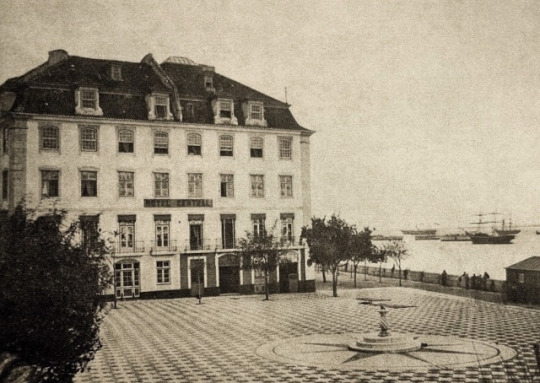
Many inhabitants of Lisbon left the city, going to live in the surroundings like Campolide and Benfica, as well as to other distant lands. Senior officials and other public servants, capitalists, businessmen and the patriarch himself, leave the capital. In the midst of this dreadful and distressing situation stood out the figure of the young monarch D. Pedro V who, despite the advice of those around him, did not want to leave Lisbon, and which other apostle of good and resignation, went to the hospitals, sitting down near the sickbed, to whom he addressed words of hope and comfort.

When the helpers who accompanied him on these pious visits asked him not to be so exposed to the terrible contagion, he replied dryly that if they were afraid they would leave him, that he could be alone. This act of selflessness and charity made the greatest impression on everyone and even the admiration of foreigners. A boy who was only 20 years old, setting such a great example of love for those who suffered, trying to soften their suffering, at least cheering them up with his presence. As ruler, King D. Pedro V was a moderate-minded liberal, having distinguished himself for his superior awareness of the country's problems. He studied the proposed government deliberations in detail. He gained enormous popularity, for the great public works carried out and for being an indefatigable and meticulous sovereign monarch who dedicated himself diligently to the government of the country, studying in detail the proposed government deliberations and their impacts, so that no one could accuse him of signing something of who had no knowledge. This type of stance towards the country's governance revealed that the monarch refused to be a mere "stamp king".

D. Pedro V ruled, in fact, in an individualized way, which earned him great popularity. An example of the attention he paid to the opinions and complaints of his subjects was the unprecedented resolution, having the famous green box, whose key he kept, be placed at the door of the Ajuda Palace,

so that his people could speak to him frankly, depositing their your expectations and complaints! It should be noted that there are differences as to where this green box was located, whether in the Ajuda palace or the Necessidades palace, however this measure taken by D. Pedro V caused some challenges in parliament.
King Pedro V became very popular, the people adored him, and called him the "holy king". Luck protected him, because by exposing himself so courageously to the danger of dark contagion, he had no sign of illness in those months of August, September, October and November 1857, when the effects of the epidemic were most pronounced. Little by little, the cases, which until then were numerous every day, became rarer, and when the end of December came, the yellow fever was completely extinguished, leaving the cries, the lamentations of the people who had lost loved ones and orphaned children, who they saw themselves left to the deepest sadness and longing. On the initiative of King D. Pedro V, the Asylo da Ajuda was created in 1857. It was intended to collect orphans of both sexes, children of the victims of cholera and yellow fever, staying in a building on the Calçada da Tapada in Ajuda in Lisbon. The age of admission was between 7 and 18 years old, and the orphans received, in addition to primary education, differentiated training according to sex. The girls were prepared for future servants to serve, and the boys learned a mechanical job. In the year 1858, it brought to Portugal more peaceful days and more happiness. To alleviate the anxieties of the previous two years, it was the marriage of the young monarch, who had become the people's idol. This news was received with the greatest enthusiasm, the wife chosen being the princess of Hohenzollern-Sigmaringen, D. Estefânia Josefina Frederica Guilhermina Antónia (1837 - 1859),
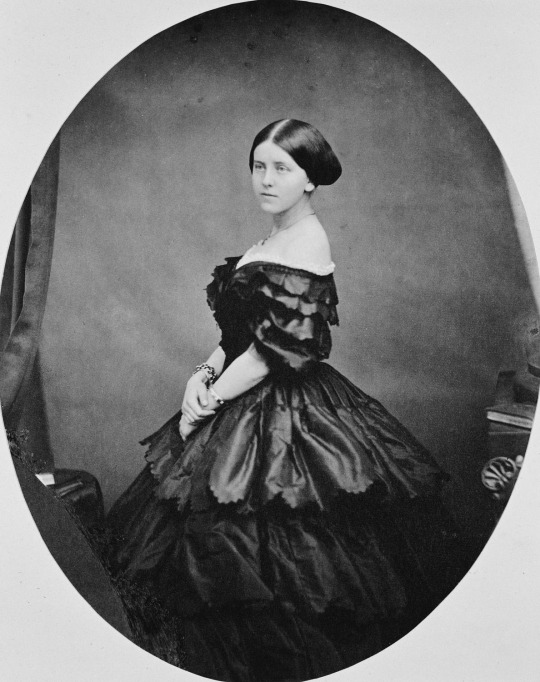
second daughter of the sovereign prince of Hohenzollern-Sigmaringen, Carlos António Joaquim, and his wife D. Josefina Frederica. Previously, there were some proposals for possible brides for D. Pedro. There was talk, even without the existence of any document that has attested any matrimonial interest, of a possible marriage to the eldest daughter of Queen Victoria of the United Kingdom, Princess Vicky, however the young D. Pedro never ignored that the future bride could not be a princess from a Protestant family, seeing in addition to Vicky always a kind of older brother, whose company allowed for more cheerful conversation whenever he spent seasons in London on his travels. Another hypothetical case was that of marriage to the Belgian princess Carlota, discussed between her father and Queen Victoria. But Estefânia de Hohenzollern-Sigmaringen would be the one chosen for D. Pedro by indication of the Prince Consort Albert de Inglaterra. D. Estefânia brought together all the characteristics that were combined with those of D. Pedro and vice versa. The marriage was made by proxy on April 29th, 1858, in the Church of Santa Hedwig in Berlin. The Count of Lavradio was responsible for the marriage contract. On May 4th, 1858, D. Estefânia went to Bruxellas, and on the 5th she left for Ostend, where the steamboat Mindelo she was supposed to embark on, which was accompanied by the steam corvette Bartolomeu Dias and two yachts English. The squadron, as soon as the queen was on board, lifted iron, and went to Dover, where she arrived on the 6th, with Queen D. Estefânia remaining in London for four days with Queen Victoria. On May 11th, she embarked in Plymouth on the steam corvette Bartolomeu Dias, and escorted by a ship and three English frigates, she went to Lisbon, where she arrived on May 17th. At the break of dawn on May 17th, 1858, D. Estefânia, was greeted on arrival in Lisbon by volleys from the castle of S. Jorge and other forts, as well as from national and foreign warships that were anchored in the Tagus.
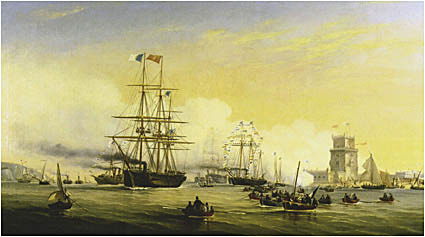
The cheers and acclaim, which the people released during the transit of Terreiro do Paço, where the young queen disembarked, reached delirium according to the reports of the time. The Terreiro do Paço was all decked out, exhibiting a pavilion across the width of the Cais das Colunas for its reception.

Five days of court gala and public holidays were decreed in the state offices. Two pavilions were set up in Terreiro do Paço,

whose mouths were elegant arches, as well as in Pelourinho, Cais do Sodré, and elsewhere in the city of Lisbon. In Rossio, where today is the memory of D. Pedro IV, in which there was only one pedestal at the time, a column was improvised, on which the statue of Hymeneu (Greek god of marriage) was seen.
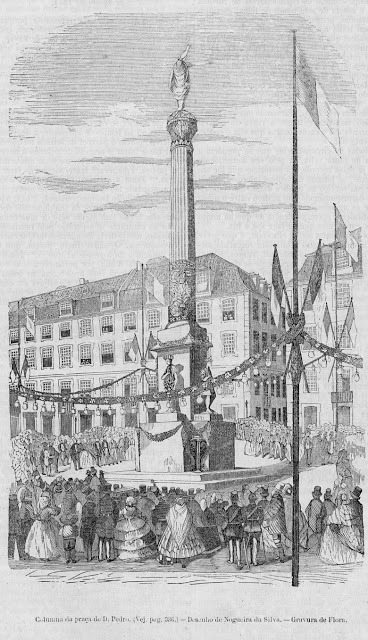
The wedding ceremony itself took place in Lisbon, the day after her arrival, on May 18th, 1858, in the church of São Domingos,
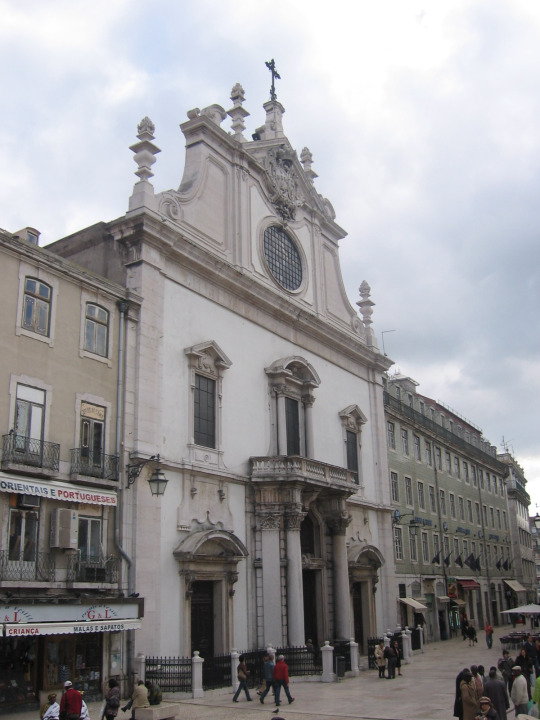
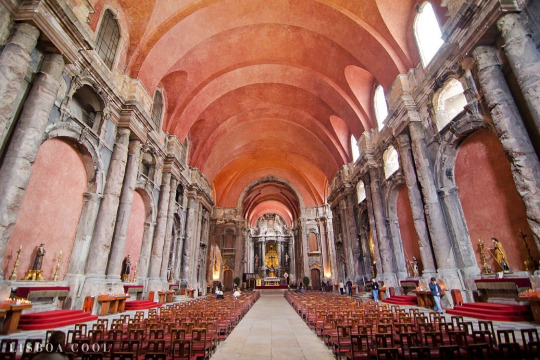
celebrated by the cardinal Patriarch of Lisbon D. Guilherme I (1793 - 1857). A beautiful spring day, which also seemed to come to greet the royal fiancés, joining the enthusiasm that was noticed everywhere, the joy and satisfaction that reflected in all faces.
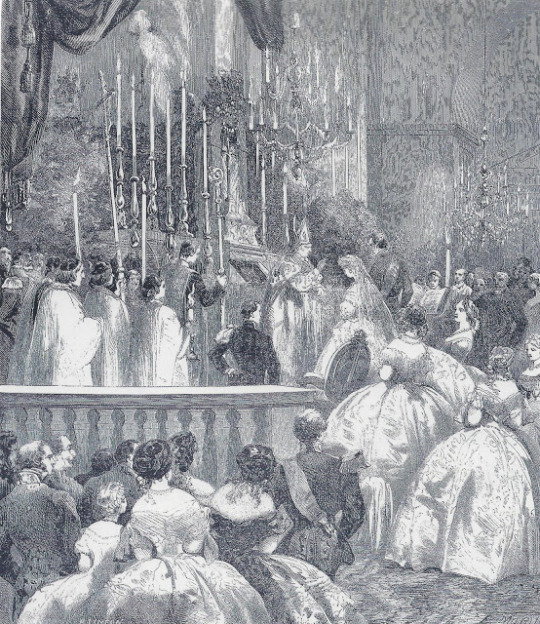
When D. Estefânia left the church of São Domingos, by the hand of her husband D. Pedro V, king of Portugal, the voices of the Portuguese dictated his destiny: “the queen is going dead! Go in chapel!” Three drops of blood had stained her spotless white dress. The young German princess did not have the strength to bear the weight of the magnificent diadem that D. Pedro had offered her as proof of his love. In the following days, splendid illuminations, parades, gala recitals in the theater of D. Maria II and diplomatic dinners were shown. Queen D. Estefânia soon also gained the greatest sympathies, her character, which is rarely found in these monarchical unions, was in perfect harmony with her husband's character.

The royal spouses loved each other extremely. They spent the honeymoon in Sintra during the summer of that year 1858, and often found themselves strolling alone arm in arm on the loneliest paths in the mountains, which were often repeated in Lisbon, through the Alcântara area ( at the time around Lisbon), and which inspired the people with the deepest sympathy, because they set an infrequent example of love in marriage and love on the throne, and the example of the highest domestic virtues with the purity of their living, with the affection that united them, which manifested itself at every moment.
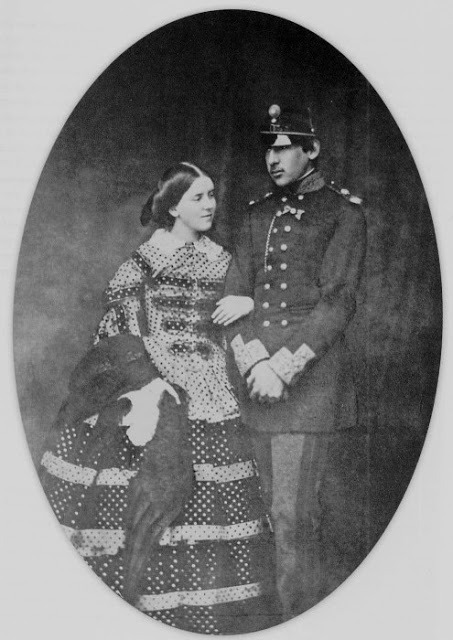
D. Pedro V, to impress his consort, spared no expense in the decoration of D. Estefânia's rooms, in the Palácio das Necessidades.
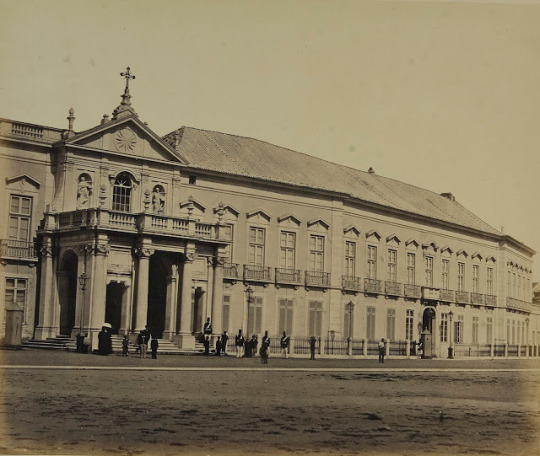
Ordering furniture, lamps, carpets and fabrics for upholstery and curtains from Paris, all of the most elegant and quality that existed.
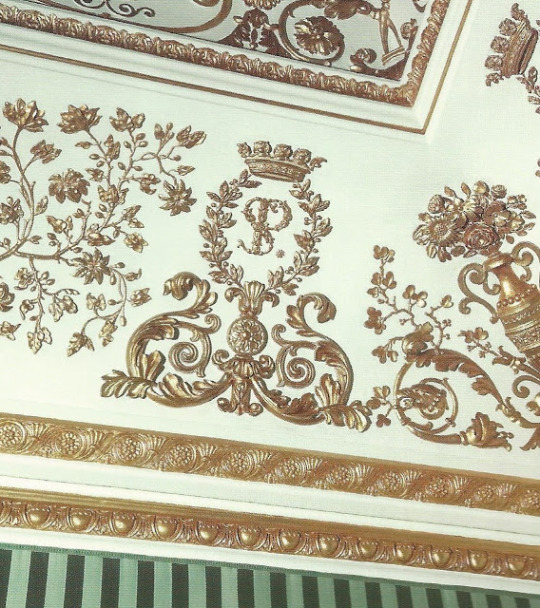

The south wing of the Mafra Palace, which had already undergone alterations in 1855, also suffered some alterations again at this time, in order to receive the monarchs, namely in the hunting seasons of which D. Pedro V was an adept, with a room exclusively dedicated to this monarch.
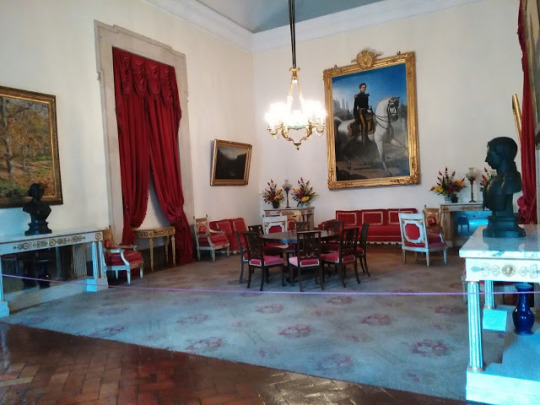
It was in that year of 1858 that D. Pedro V had the noble idea of founding in Lisbon the high literary studies that did not exist in Portugal and which after his death had little development. He gave part of his civil list to buy inscriptions, which constituted the endowment of a new establishment of higher education, the Higher Course of Letters,
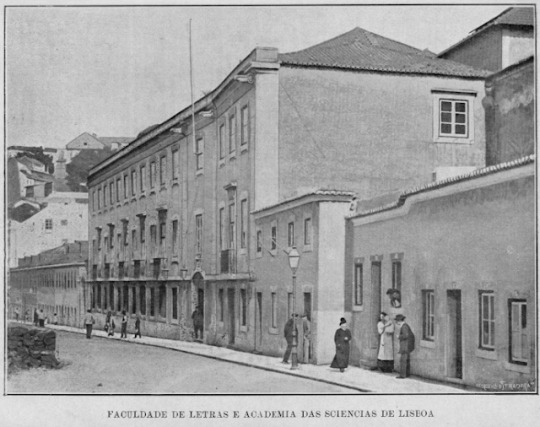
where the chairs of history, ancient literature, modern literature, philosophy of history and philosophy were created transcendent, chairs that were conducted by Lopes de Mendonça, Rebelo da Silva, Jaime Moniz, etc. That was the foundation, for which D. Pedro V was very sympathetic, and often the monarchist scholar who loved letters and science, would listen to the teachers' lessons, preferably listening to the inspired and eloquent word of the great Rebelo da Silva. It was, together with his wife, Princess Estefânia de Hohenzollern-Sigmaringen, that Pedro founded public hospitals and charities. In fact, fulfilling the wishes expressed by her after a visit to the Hospital de São José, where the queen was impressed by the promiscuity with which children and adults were treated in the same ward. Queen D. Estefânia offered her wedding dowry so that a children's ward could be created there, and she also expressed the desire to build a hospital exclusively for poor and sick children.

But the trials that the unfortunate king had to go through in his short reign of just six years were not yet complete. Two facts followed one another that deeply hurt him, one as a king, and the other as a dedicated and loving husband. Being a staunch supporter of the abolition of slavery, an episode dates from his reign that attests to the monarch's conviction in this matter and that simultaneously demonstrates Portugal's fragility before the great European powers, when in 1859 the slave ship was seized in 1859 Frenchman Charles et Georges,

and his commander was arrested. The French government not only demanded the release of the ship, but for that purpose sent a squadron to the waters of the Tagus to take that ship and face the Portuguese flag, as well as demanding a large indemnity to the Portuguese government. Still the disputes with England for the dominions in Africa and with the Holy See. As husband, he saw that same year, on July 17th, his wife died at the age of twenty-two, victim of diphtheria angina. The disease would have been contracted during a visit to Vendas Novas. D. Estefânia's last words would have been: "Comfort my Pedro!".
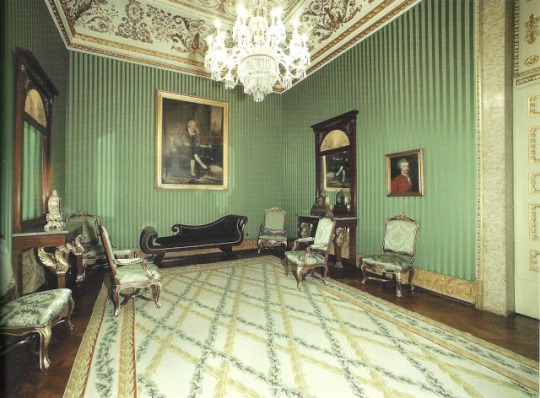
The death of D. Estefânia left D. Pedro inconsolable with such a great loss. The heartfelt letter that the monarch wrote to the Duke of Terceira, then president of the council of ministers, was a memorable letter, passed on from such profound melancholy and written with eloquent simplicity. "Me and my people have been companions of misfortune, the conscience tells me that I have not abandoned them." So it was, the people also did not abandon him in this supreme anguish; "It was a heart for the earth and a spirit for heaven," added D. Pedro V, referring to the wife he had lost. The death of D. Estefânia greatly dismayed not only the king, but also the people in general, who had developed great affection and affection for her.
The funeral procession of D. Estefânia was conducted under great consternation to the Monastery of São Vicente de Fora.
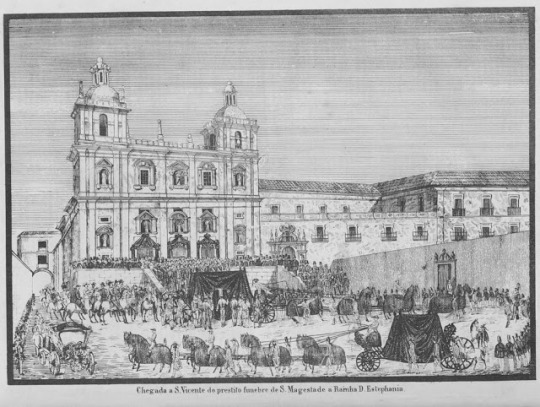
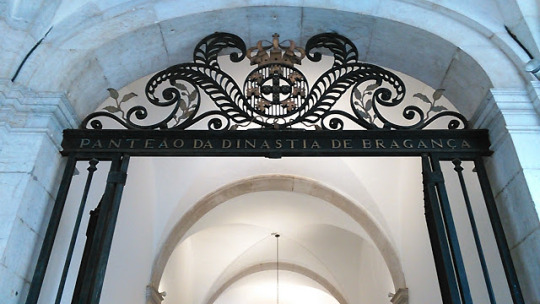

Due to their early death, the couple did not have any children. However, D. Pedro V's speeches were always full of high ideas, and he wrote in a nervous and very concise style, which sometimes went into obscurity. Critics accused this enigmatic style, and said that el-rei, who knew German culture well, was sympathetic to the German philosophy influenced by his father D. Fernando. The truth is that he sought only to embody in the smallest number of words possible the greatest possible number of ideas. It was not limited to speeches or intellectual activity. In the Revista Contemporânea de Portugal e Brazil

he wrote with the pseudonym Azonbolos, a study about the taking of Gaeta by the Piedmontese troops. Many fragments of philosophical and moral studies were mixed with his papers after his death. D. Pedro V often vented his most intimate and distressing pains with Joaquim Pinheiro Chagas (1808 - 1859), his secretary. He had been his vigil companion in the hours following the death of D. Estefânia, in which the sad king, after a few minutes of restless sleep, woke up in great fits of tears, and embraced his secretary, who, having also since the woman he loved dearly died, he knew how to understand and how to console that sincere and profound pain.

The death of this faithful and devoted friend was yet another profound and unexpected blow for the king, because Joaquim Pinheiro Chagas died in the force of life when he was only fifty years old. In 1860 the disastrous result of the realization of an idea he loved, the establishment of a recruit deposit in Mafra, also made a deep and painful impression on him. The poor conditions in which this deposit was organized produced the disaster, but D. Pedro V felt it deeply, not only because he could partly be responsible for the death of so many recruits who expired there in that slaughterhouse, but also for see one of the projects shattered in smoke, from which he thought the most profitable fruits would result. It is also after the death of his wife, D. Estefânia, that King D. Pedro V founded in Lisbon, the Hospital da Bemposta in 1860, in the old gardens of the Bemposta royal farm, a hospital destined for poor and sick children as a wish of the your wife. The works of this hospital begin in the reign of D. Pedro V but will only be inaugurated later, on July 17th, 1877, after his death, by his brother D. Luiz I already as king of Portugal and designated as Hospital D. Estefânia.

The monarch was not given to grand state ceremonies, as well as invitations to other distinguished foreign statesmen, he felt that Lisbon was not in a position to receive them like the palaces themselves. It concludes that foreigners could not assess our degree of poverty. 19th century Lisbon does not have hostels for any more demanding visitor, not even the existing palaces.
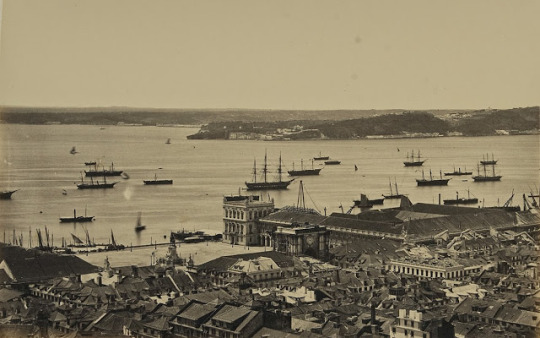
D. Pedro V was Duke of Saxe-Coburgo-Gotha,

Grand Master of the military orders of Christ,

S. Bento de Avis

and S. Tiago da Espada;

grand cross of those of the Tower and Sword
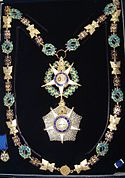
and of Our Lady of the Conception of Vila Viçosa;
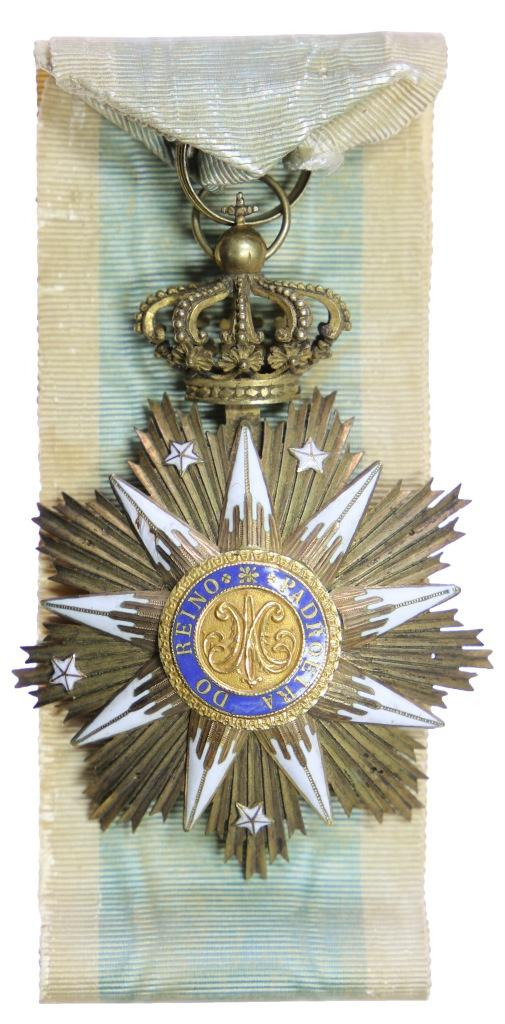
knight of the Order of the Golden Fleece, of Spain,
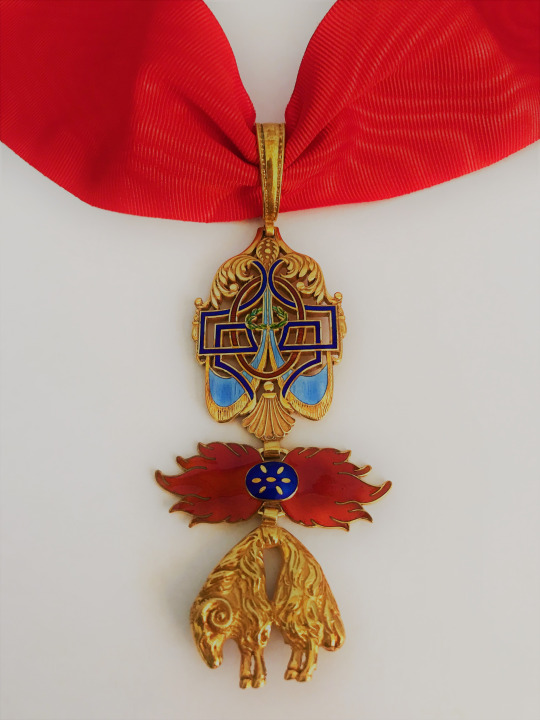
and of the Supreme order of the Most Holy Annunciation, of Sardinia;
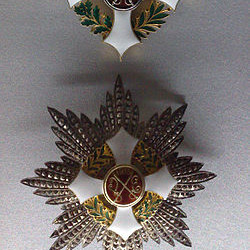
first-class knight, in brilliants, of Hohenzollern;

grand cross of orders from Cruzeiro do Sul, Brazil;

from St. Stephen of Hungary, from Austria;
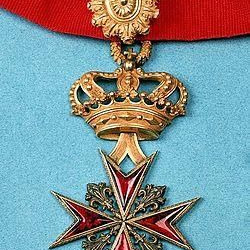
the Black Eagle, from Royal Saxony; the Dutch Lion, from the Netherlands;

the White Falcon, by Saxe-Weimar;
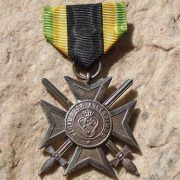
the Legion of Honor, France;

by S. Fernando and Mérito, by Duas Sicílias.

D. Pedro V respected the important politicians of his time, and was a great respecter of Alexandre Herculano, whom he visited frequently, entertaining with the notable historian scientific discussions; he spent long hours, when he was in Mafra, consulting chronicles and other old books from that valuable library. He dedicated himself to music, playing the piano excellently, he was notable in fencing, a good marksman, and he drew with taste and ease, having the special gift of characterizing a person at first suddenly with three or four strokes, leaving many of his caricatures notable for grace and for the speed and firmness of the stroke. Hunting was one of his favorite pleasures. It was he who completely abolished the hand kiss, a palatial etiquette that was one of the remains bequeathed by absolute sovereignty, and refused to confirm the death penalty. He did not want to see the citizens, among whom he was the first, bend his knee in his presence, because that bow belongs only to Divinity as it belongs to him alone to take the life of men. He understood that the hand-kissing ceremony was an act of servility unworthy of every self-respecting man, as he understood that human justice is solely responsible for correcting delinquents, by seclusion and work, to restore them to society, purified and provided. King Pedro V ends all this, saying: "kneel down… .a man only kneels before God, who is above him, all other men are brothers", "no one has to kneel before anyone" and "kiss the hand… we can be kiss the hand of a father to a mother… now I am not a father of the Portuguese… I am their brother" "so no one else will kiss my hand" "a Portuguese who cares of another Portuguese shakes his hand and it is with a loyal handshake that expresses their friendship ". King D. Pedro V undertook many trips from north to south of Portugal, to the city of Porto where he made several visits and inaugurations, as in 1860 in the company of his brother D. Luiz I, the inauguration of the Porto Agricultural Exhibition, visits the chain da Relação do Porto, where writer and novelist Camilo Castelo Branco (1825 - 1890) and Ana Plácido (1831 - 1895) were imprisoned, as well as an important visit that same year to Setúbal.
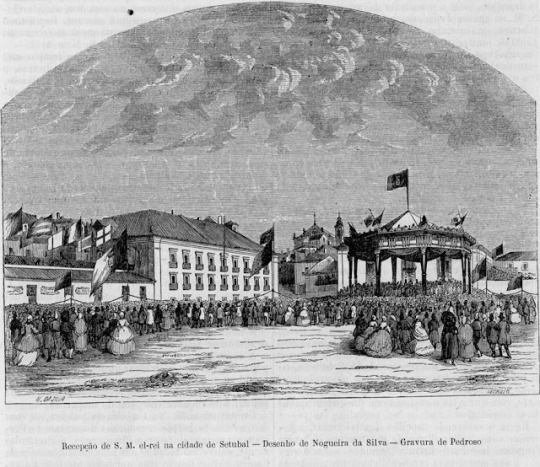
In 1861 he returned to Porto and Braga where he made state visits and some important inaugurations as a symbolic inauguration on September 3rd of that year, of what would later become the Crystal Portuense Palace.

With regard to advances in the study of sciences, in the year 1861, King D. Pedro V had the initiative to endow Lisbon with an Astronomical Observatory.

For that purpose, the decree for that purpose was already promulgated on February 14th, 1857, resulting from the initiative and funding by King D. Pedro V on January 31st, 1857. Thus, on March 11th, 1861, construction of the Real began. Lisbon Astronomical Observatory at Tapada da Ajuda in Lisbon.

In October 1861, a trip that the king undertook to Alentejo, more precisely to Vila Viçosa, with his brothers, D. Augusto de Bragança and D. Fernando Maria Luiz de Bragança,
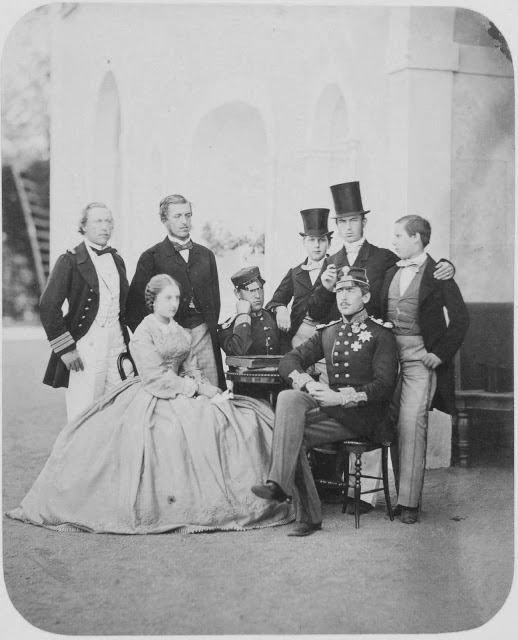
had the most dire results. In that province, they contracted malarial fevers (as they were called at the time), after what appears to have been drinking contaminated water from a well, which soon took on a profoundly serious character. The infant D. Fernando Maria Luiz de Bragança passed away on November 9th, and two days later, on November 11th, King D. Pedro V also died, in the same room where he was born in the Palácio das Necessidades, at the flourishing age of twenty-four years of the same disease, which today is known as typhoid fever, according to the opinion of doctors. It was then that it became known how much he was deeply esteemed and loved. The people only heard of the serious illness of the king and his brothers, they grouped together in great distress around the palace. First there was only anguish and anxiety, then suspicions of crime began to arise, and the death of the infant D. Fernando Maria Luiz de Bragança, the very serious state in which the infant D. Augusto de Bragança was found and the perfectly desperate state of the king , further confirmed the poisoning ideas. Of note is the visit that the king made to Castelo de Vide, on October 7th, 1861, about a month before he died, thus perpetuating the memory of a king who nicknamed Castelo de Vide "Sintra do Alentejo". The monarch had been received in the region with evidence of great esteem on the part of the population, and the news of his death caused great consternation.
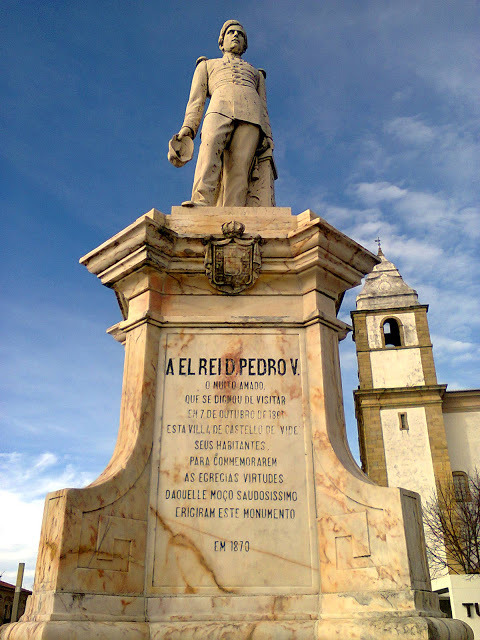
The king's death added to the excitement of the city of Lisbon. The king's two brothers, D. Luiz I of Portugal and D. João de Bragança, who were traveling, traveling, hurriedly returned to their homeland, and arrived shortly after the death of D. Pedro V. Attacked by a disease, with symptoms identical to those of of his brothers, D. João de Bragança also died, in the following month of December. The funeral of D. Pedro V was the most painful expression of mourning that Lisbon has seen since 1834. A funeral without carriages, since from the Palácio das Necessidades to the Pantheon of São Vicente de Fora, it was the procession followed by a countless crowd.
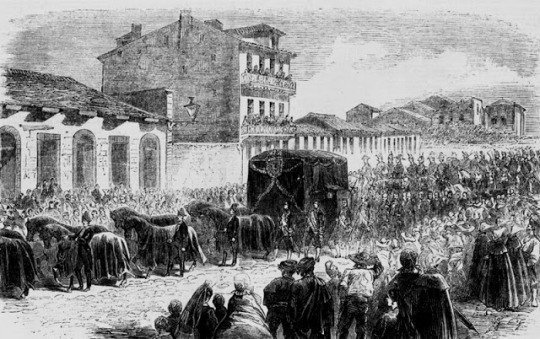
Members of the nobility and clergy were present, deputies and senators, soldiers and writers accompanied the king to the grave who had opened a horizon of hope in national life. Regarding this, Raimundo António de Bulhão Pato (1828 - 1912) wrote: "It was the first time that I saw Alexandre Herculano cry like a child." D. Pedro V lies in the Royal Pantheon of the Bragança Dynasty,
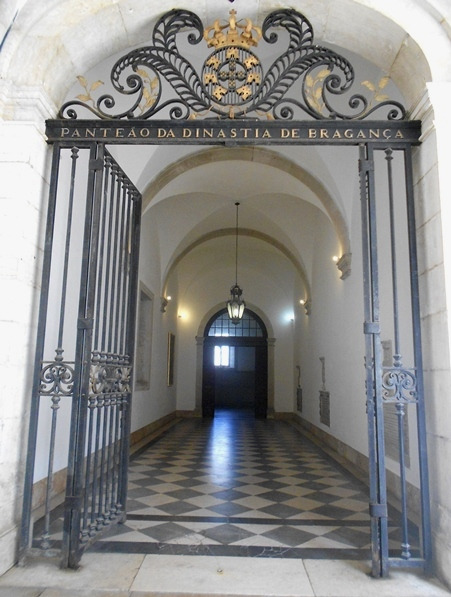
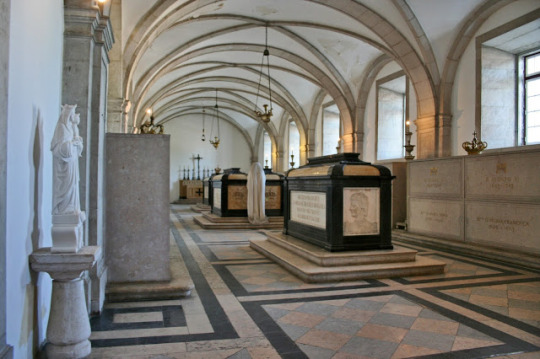

in the Monastery of São Vicente de Fora, in Lisbon. All this gave rise to the Christmas riots, classified by José Estevão in the following famous sentence: "It is the anarchy of pain protesting against the despotism of death." The feeling was general and profound throughout the country. Shortly afterwards, everything was said, since D. Pedro V died a virgin, until he would have been poisoned by those whose personal power overshadowed. Several figures were found guilty without proof, such as the Marquis of Loulé, who intended to take revenge on the monarch for the first resignation of his Government, others blamed the Spanish banker D. José de Salamanca y Mayol (1811 - 1883), creditor of the State for sums he had invested in the construction of the first railway lines and in whose residence D. Pedro V would have dined the night he returned from Alentejo. There are scenes of uncontrolled weeping, contempt, and rioting, crimes on the street by some to avenge the king. Lisbon does not take comfort from the loss it suffered. With the young monarch D. Pedro V it is already a good part of the 19th century that he is going to bury, the belief in the initial values of Liberalism, the fiery support for the constitutional cause, the pride of the country that has yet to be hurt. The following phase of D. Pedro V became famous among many: "Man is short when his tongue is cut." More recently, the writer, novelist and historian Ruben Andersen Leitão (1920-1975), considered D. Pedro V in his work "D. Pedro V Um Homem e Um Rei", as the "first modern man in our country".

However, he can consider himself, assessing for all his life as a monarch, King D. Pedro V as, in addition to the first modern man in Portugal, a king with great competence, endowed with a great culture and a visionary for the your time. He was, like one of his nicknames, a king of hope ... Who knows if Portugal would have taken a different path if D. Pedro V had not disappeared so soon ?!
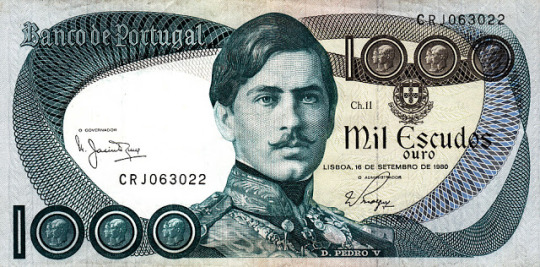

8 notes
·
View notes
Text
Fernando II, King of Portugal by jure uxoris (Husband of Queen Maria II of Portugal)

Reign: 16 September 1837 – 15 November 1853
Fernando II (29 October 1816 – 15 December 1885) was a German prince of the House of Saxe-Coburg and Gotha-Koháry, and King of Portugal jure uxoris as the husband of Queen Maria II, from the birth of their first son in 1837 to her death in 1853.
In keeping with Portuguese law, only after the birth of his son in 1837 did he acquire the title of king. Fernando’s reign came to an end with the death of his wife in 1853, but he served as regent for his son and successor, King Pedro V, until 1855.

Born Ferdinand August Franz Anton in Vienna, he was the eldest son of Prince Ferdinand of Saxe-Coburg-Saalfeld

and his wife Princess Maria Antonia Koháry de Csábrág,

heiress to the House of Koháry. The younger Fernando grew up in several places: the family estates in modern-day Slovakia, the imperial court of Austria, and Germany. He was a nephew of King Leopold I of Belgium,

and thus a first cousin to Leopold II of Belgium

and Empress Carlota of Mexico,

as well as Queen Victoria of the United Kingdom

and her husband Prince Albert.

In 1826, his title changed from Prince of Saxe-Coburg-Saalfeld to Prince of Saxe-Coburg and Gotha, following the re-arrangement of the Saxon duchies.
According to Portuguese law, the husband of a queen regnant could only be titled king after the birth of an heir from that marriage; this was the reason Maria II's first husband, Auguste de Beauharnais, Duke of Leuchtenberg, never acquired the title of king. After the birth of their eldest son and heir, the future Pedro V of Portugal, Ferdinand was proclaimed King Dom Fernando II.
Although it was Maria who reigned by right, the royal couple formed an effective team during their joint reign, with Fernando reigning by himself during his wife's pregnancies.

Eventually, Maria II died as a result of the birth of their eleventh child, and Fernando II's reign ended. However, he would assume the regency of Portugal from 1853 to 1855, during the minority of his son King Pedro V.
In 1869 he rejected an offer to assume the throne of Spain.
Fernando was an intelligent and artistically minded man with modern and liberal ideas. He was adept at etching, pottery and painting aquarelles. He was the president of the Royal Academy of Sciences and the Arts, Lord Protector of the University of Coimbra and Grand-Master of the Rosicrucians.

In 1838, he acquired the former Hieronymite monastery of Our Lady of Pena, which had been built by King Manuel I in 1511 on the top of the hill above Sintra and had been left unoccupied since 1834, when the religious orders were suppressed in Portugal. The monastery consisted of the cloister and its outbuildings, the chapel, the sacristy and the bell tower, which today form the northern section of the Pena National Palace (the "Old Palace").

Fernando began by making repairs to the former monastery, which, according to the historical sources of that time, was in poor condition. He refurbished the whole of the upper floor, replacing the fourteen cells used by the monks with larger-sized rooms and covering them with the vaulted ceilings that can still be seen today. In 1843, the king decided to enlarge the palace by building a new wing (the New Palace) with even larger rooms (one of them being the Great Hall), ending in a circular tower next to the new kitchens. The building work was directed by the Baron von Eschwege, a wild architectural fantasy in an eclectic style full of symbolism that could be compared with the castle Neuschwanstein

of King Ludwig II of Bavaria.

The palace was built in such a way as to be visible from any point in the park, which consists of a forest and luxuriant gardens with over five hundred different species of trees originating from the four corners of the earth.

Fernando would spend his last years in this castle with his second wife, receiving the greatest artists of his time.

In 1836 Fernando married Queen Maria II of Portugal. Eleven children were born to the royal couple before Maria died of complications due to childbirth in 1853. Fernando was destined to outlive eight of his eleven children. In late 1861, an attack of cholera or typhoid fever struck the royal family and Fernando suffered the tragedy of witnessing the death of three of his five surviving sons.
Later in his life, Fernando married again in Lisbon on 10 June 1869 to actress Elisa Hensler

(Neuchâtel, 22 May 1836 – Lisbon, Coração de Jesus, 21 May 1929). Just before the marriage, she was created Gräfin (Countess) von Edla by Fernando's cousin Ernest II, Duke of Saxe-Coburg and Gotha.

The couple had no children.
By Maria II of Portugal (4 April 1819 – 15 November 1853; married on 9 April 1836):
Pedro (16 Setember 1837 - 11 November 1861) Succeeded his mother as Pedro V, King of Portugal.
Luís (31 October 183819 October 1889) Succeeded his brother, Pedro, as King of Portugal.
Infanta Maria (4 October 1840) Stillborn daughter.
Infante João (16 March 1842 - 27 December 1861) Duke of Beja
Infanta Maria Ana (21 August 1843 - 5 February 1884) Married King George of Saxony and was the mother of King Frederick August III of Saxony.
Infanta Antónia (17 February 1845 - 27 December 1913) Married Leopold, Prince of Hohenzollern, and was the mother of King Ferdinand I of Romania.
Infante Fernando of Portugal (23 July 1846 - 6 November 1861) Died of cholera at age 15.
Infante Augusto (4 November 1847 - 26 September 1889) Duke of Coimbra
Infante Leopoldo (7 May 1849) Stillborn son.
Infanta Maria da Glória (3 February 1851) Stillborn daughter
Infante Eugénio (15 November 1853) Died some hours after the death of his mother.
9 notes
·
View notes
Text
31st King of Portugal (11th of the Bragança Dynasty): King Luis I of Portugal, “The Popular”
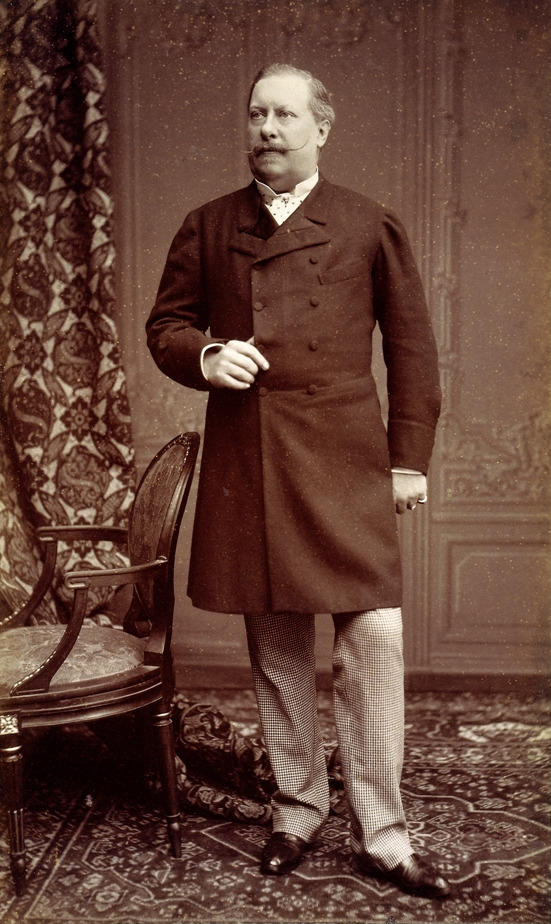
Reign: 11 November 1861 – 19 October 1889 Acclamation: 22 December 1861 Predecessor: Pedro V
Luís I (31 October 1838 in Lisbon – 19 October 1889 in Cascais), known as “The Popular” (O Popular) was a member of the ruling House of Bragança, and King of Portugal from 1861 to 1889. The second son of Maria II

and Fernando II,
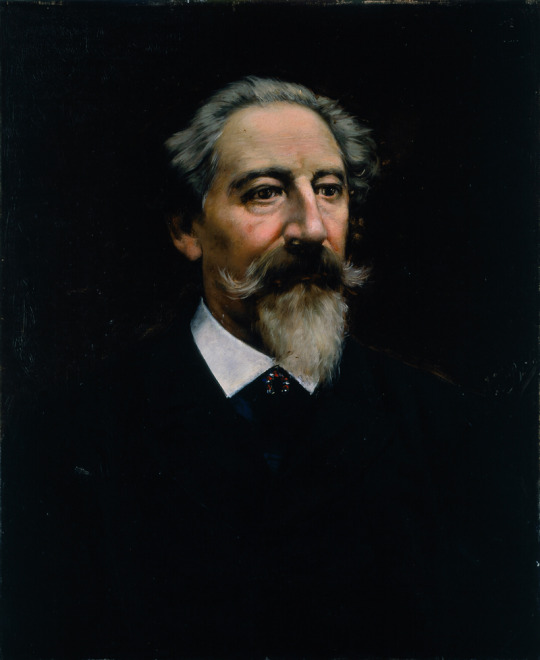
he acceded to the throne upon the death of his brother Pedro V.

Infante D. Luís was born on October 31, 1838, second son of Queen D. Maria II and her consort, D. Fernando II. Although his condition as a second son did not predict that D. Luís would ascend to the Portuguese throne, his education was painstaking and shared in large part with his older brother, Príncipe Real D. Pedro: he was in charge of councilor Carl Andreas Dietz, who had been a tutor to D. Fernando, his father, until April 1847, when Dietz was forced to leave Portugal on charges of meddling in national politics associated with his Protestant religious affiliation, having been replaced by Viscount da Carreira,

aided by Manuel Moreira Coelho.
D. Pedro and D. Luís divided the time between the palaces of Mafra,

Sintra,

and Vila Viçosa,

in addition to sporadic stays at the Palace of Belém.

As the second-born son of the royal couple, D. Luís embarked on a naval career, having been named the square of the Companhia dos Guardas Marinhas and recognized in a ceremony at the Navy Arsenal on October 28, 1846, when he was only 8 years old.
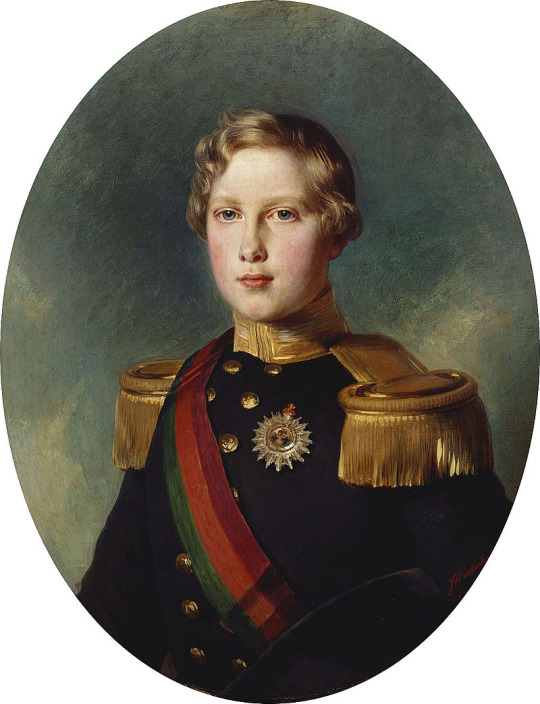
He was to be successively promoted to second lieutenant (1851), captain-lieutenant (1854), captain-of-frigate (1858) and captain-of-the-sea-and-war (1859). He had his first naval command in September 1857, at brig Pedro Nunes, on which he made a cruise on the coast of Portugal and a trip to Gibraltar. He was appointed, by brother D. Pedro V, commander of the corvette Bartolomeu Dias, on June 21, 1858.
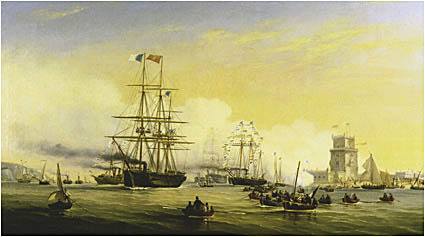
At the command of Bartolomeu Dias, he came to carry out nine service missions between the years 1858 and 1860: he led the expedition to the archipelagos of Madeira and the Azores; was responsible for transporting Prince Jorge of Saxony

to Lisbon, where he married Infanta D. Maria Ana,

his sister; led the couple to England; went to Tangier; and, in 1860, Angola; he went to Madeira again at the behest of Empress Isabel of Austria;
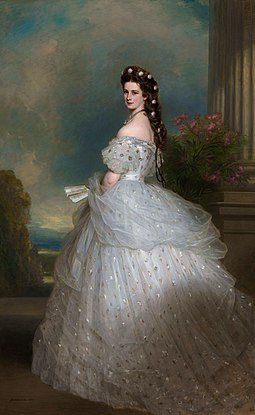
and brought Prince Leopoldo de Hohenzollern-Sigmaringen
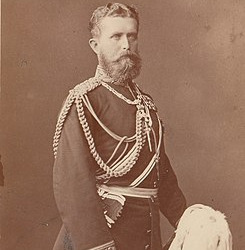
from Southampton, to his wedding with Infanta D. Antónia,
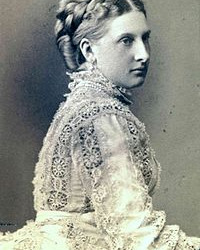
after which he took the bride and groom to Anvers.
D. Luís inherited the crown in November 1861, succeeding his brother D. Pedro V for not leaving any descendants, and was acclaimed king on December 22 of the same year. On September 27 of the following year, he married, by proxy, with D. Maria Pia de Sabóia, daughter of King Vitor Emanuel II of Italy. As an infant he served in the navy, visiting Portuguese Africa. He exercised his first naval command in 1858.
Luís was a cultured man with a polite education, like all his brothers. Of great artistic sensitivity, he painted, composed and played cello and piano. Polyglot, he spoke some European languages correctly. Translated works by William Shakespeare.
In 1869 he did not want to be monarch of Spain and made a point of making it very clear both to the Council of Ministers, chaired by the Duke of Loulé, and to the Portuguese people. Two days after his patriotic letter was published in the Government Gazette, it was time for publication in the Diário de Notícias, thus serving the Casa Real to deny the rumor that there would be abdication: "I was born Portuguese, Portuguese I want to die", proclaimed D Luís, on the first page of the DN on September 28, 1869. D. Luís, if he accepted the Spanish crown, he would have to abdicate in Portugal to D. Carlos, the son of only 6 years old, with D. Fernando II as regent, opening the possibility of a Iberian Union in the medium term. After the refusal of D. Luís the Spanish throne was handed over to Amadeu de Saboia.

During his reign and, as a result of the creation of the general consumption tax, which public opinion received badly, the mutiny that was called Janeirinha (in late 1867) originated. Also on May 19, 1870, there was a military revolt, promoted by Marshal Duque da Saldanha
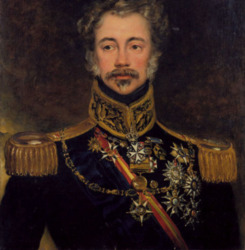
and which intended to resign the government. To the revolt of May 19, the monarch replied on August 29, with the resignation of the Saldanha ministry, calling to power Sá da Bandeira.

In September 1871, Fontes Pereira de Melo

came to power, which organized a regenerating cabinet, which was maintained until 1877. The Duke of Ávila followed, who did not last for long because he lacked a majority. Thus, and after the parliamentary conflict that broke out in 1878, Fontes was called again to form a cabinet. Consequently, progressives attacked the king, accusing him of scandalously sponsoring the regenerators. This episode constitutes an incentive to the development of republicanism. In 1879, D. Luís called, then, the progressives to form government.
In his time the Quimão Coimbrã (1865-1866) arose and there was the initiative of the Casino Conferences (1871), to which were linked the names of Antero de Quental

and Eça de Queiroz,
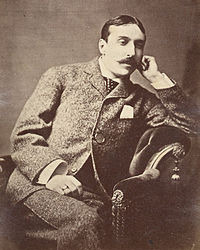
the exponents of a generation that stood out in the intellectual life Portuguese. With a calm and conciliatory temperament, he was a model of constitutional monarch, scrupulous respect for public liberties. Of his reign, special mention should be made of the start of works on the ports of Lisbon and Leixões, the widening of the network of roads and railways, the construction of the Crystal Palace in Porto,

the abolition of the death penalty for civil crimes, the abolition of slavery in the Kingdom of Portugal, and the publication of the first Civil Code.
In colonial affairs, Delagoa Bay was confirmed as a Portuguese possession in 1875, whilst Belgian activities in the Congo (1880s) and a British Ultimatum in 1890 denied Portugal a land link between Portuguese Angola and Portuguese Mozambique at the peak of the Scramble for Africa.
Fertile in events, it is during the reign of D. Luís I that some of the Portuguese political parties are founded: the Reformist Party (1865), which came to power in 1868, the Portuguese Socialist Party (1875), with the name of Partido Operário Socialista , and the Progressive Party (1876), which comes to power in 1879. In 1883, the Congress of the Republican Party Organizing Committee takes place. At the end of its reign, the Republican Party is already presenting itself as a perfectly structured political force.
D. Luís was mainly a man of the sciences, with a passion for oceanography. He invested much of his fortune in financing scientific projects and oceanographic research boats, which traveled the oceans in search of specimens. He successfully practiced photography.
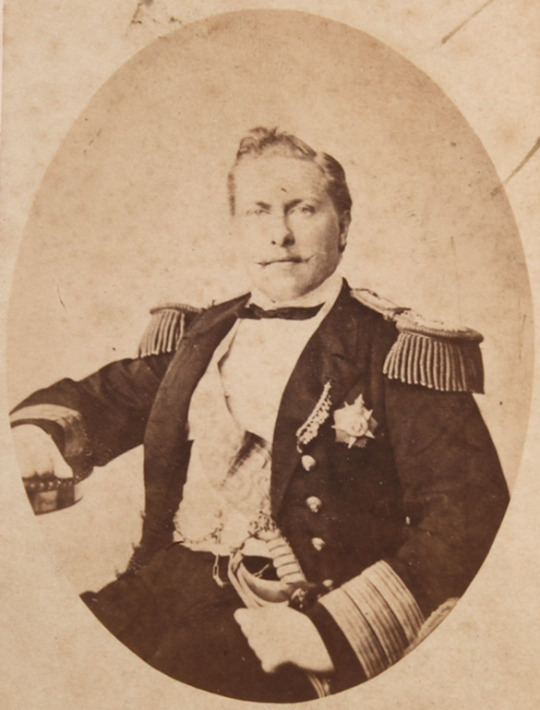
Luís followed in the footsteps of his mother - D. Maria II, ordering the construction and founding of cultural associations. On June 1, 1871, D. Luís was in Seixal (a village founded by his mother), to witness the founding of Sociedade Philharmonic Union Seixalense. That same day the Franco-Prussian War ended.
He died, after a long suffering, in the citadel of Cascais, on October 19, 1889, a few days before his 51st birthday. His son D. Carlos succeeded him, under the name of D. Carlos I of Portugal. It lies in the Royal Pantheon of the Bragança Dynasty, in the Monastery of São Vicente de Fora, in Lisbon.

On 6 October 1862, Luís married Princess Maria Pia of Savoy (16 October 1847 – 5 July 1911), daughter of Victor Emmanuel II of Italy and Maria Adelaide of Austria. They both had a deep love at first, but Luis's countless mistresses led Maria Pia to depression. Together they had two sons who survived childhood, and a stillborn son in 1866.
Dom Carlos, Prince Royal of Portugal (28 September 1863 – 1 February 1908), successor as King Carlos I; murdered by the Carbonária.
Dom Afonso, Prince Royal of Portugal (31 July 1865 – 21 February 1920), Infante of Portugal, Duke of Porto, Viceroy of India, and after 1908 Prince Royal.
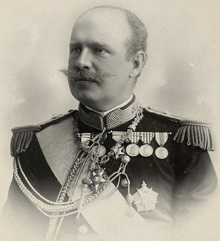
Miscarriage (1866)
The King also fathered one illegitimate son, also named Carlos, who was born in 1874 in Lisbon.
6 notes
·
View notes